

What is a Bow of a Boat? Types of Bow Designs
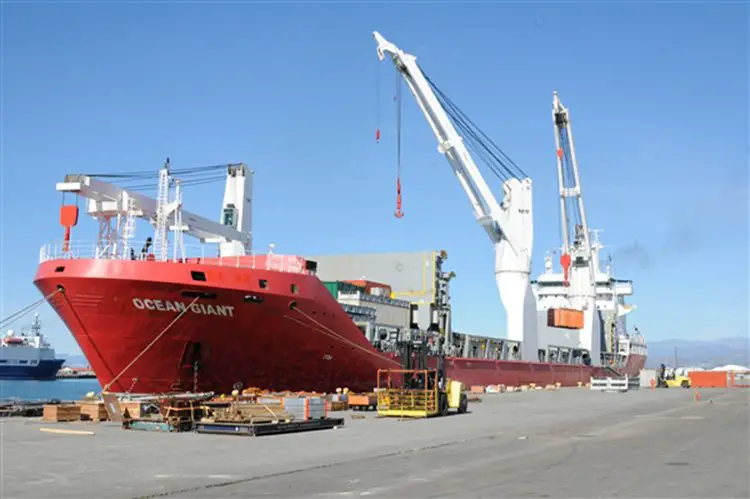
We will discuss a very important part of a ship or a boat – Bow .
Ships and boats face immense resistance on the water for the simple fact that compared to air, water produces more drag when moved through.
Hence the ships need to be designed in such a manner that the resistance is kept to the minimum. While conceptualizing a ship, the bow designs are the main factors.
While ships that are slender and curvier have less Wave Making Resistance while on the other hand, for the fuller ships the components of Wave Breaking Resistance are a more important factor.
What is the Bow of a Boat?
The bow is the name for the forward ends of the hull on boats and ships. It is the opposite end from the stern. The bow is that part of the ship that comes in contact with the water first and can be designed in a manner to control how the waves interact with the ship.
Where is the Bow of a Boat?
The bow is located in the front of a boat or ship. The bow of a boat usually has a pointed shape extending out of the water to cut through waves. This is designed to reduce drag and allow smoother movement through the water.
Types of Bow Designs
Though new designs seem to be dropping in every now and then, they seem to have reached a saturation point as most of them seem to be improvements made on old designs. With all that kept aside, here are some bow design types:
- The bulbous bow
- A normal bow without a bulb
- Other special bows
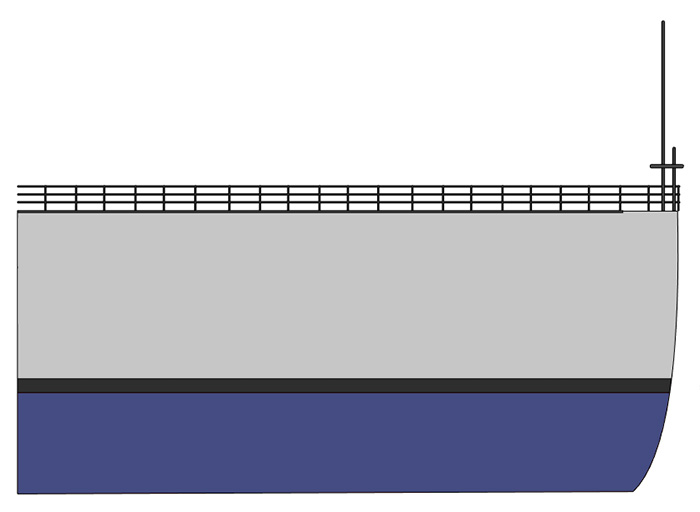
What we today call a normal bow has evolved from what was previously a vertical bow . Rake may be defined as the angle the ship’s stem makes with the waterline. This bow has the maximum waterline length of all.
A straight-edged vertical bow that is perpendicular to the waters is known as a plumb bow . If we don’t include an X-bow or Inverted bow, they happened to have the maximum waterline. This is what enables it to attain greater hull speed.
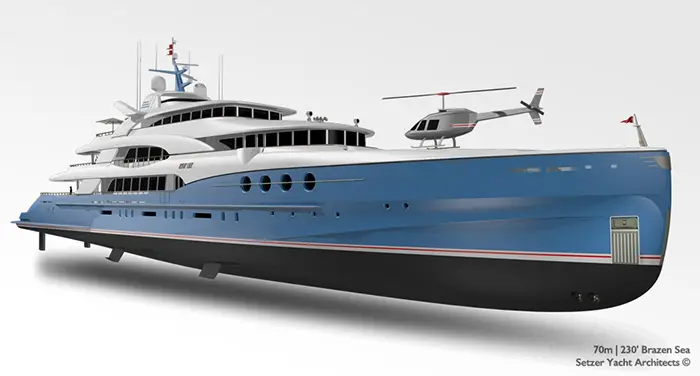
Pic courtesy: http://www.setzerdesign.com/new-concepts/plumb-bow-superyachts
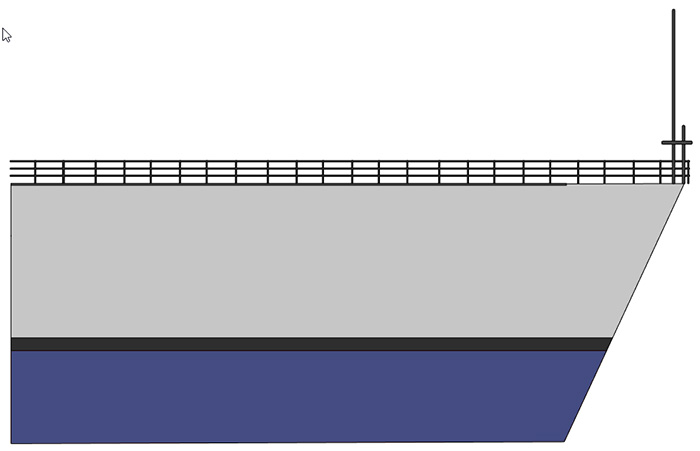
Raked bow designs can be said to be the most commonly used bow. It is also the most popularly used. The line of the bow is flat. It does not have any curves. The acute angle has to be less than 45 degrees. This enables the forward waterline position to allow more accommodations and especially a larger forward stateroom V-berth.
Clipper Bow
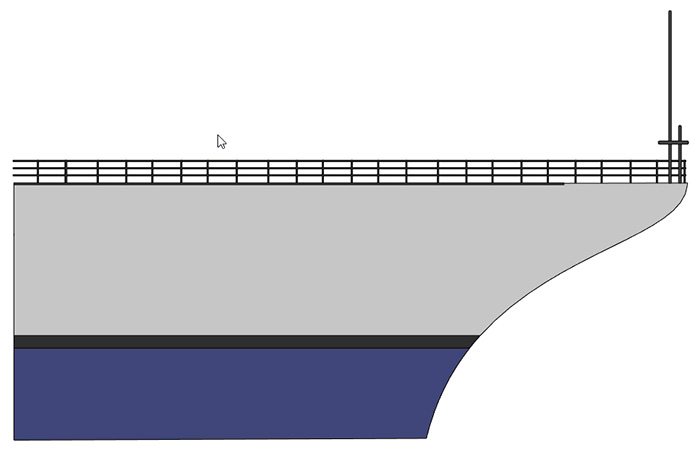
Clipper bow designs are some of the most traditional types of bow designs. The angle at which a ship’s hull plate or planking departs from the vertical in an outward direction with increasing height is known as a flare. They are used in conjunction with rakes.
Apart from easing the pitch motions flaring keeps water off the decks. Sometimes the rake is set up in such a manner that it protects the submerged portion during the collision by taking the impact first. This is known as the ‘crumple zone’.
In general, these types are called clippers . The way the rake is set up here increases the center of buoyancy as well as the stability of the ship. This, in turn, increases the GM which is an important factor for the ship’s stability.
Read more: What is a clipper ship?
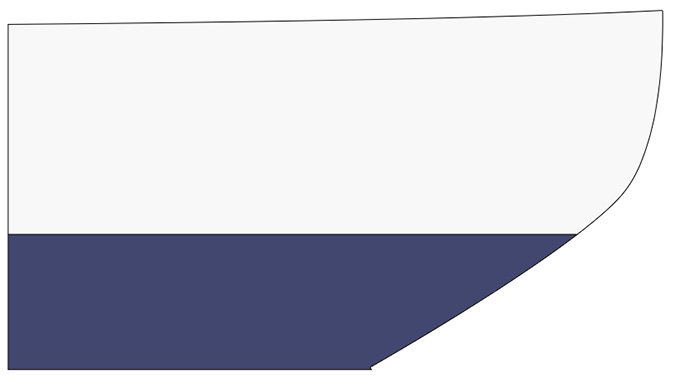
A spoon bow is a kind of bow design that convexes to the deck. It is called so because of its spoon-like appearance. This curve near the waterline is the most gradual. Such bow designs produce wave-making resistance due to the curvature at their cross-section.
Bulbous Bow
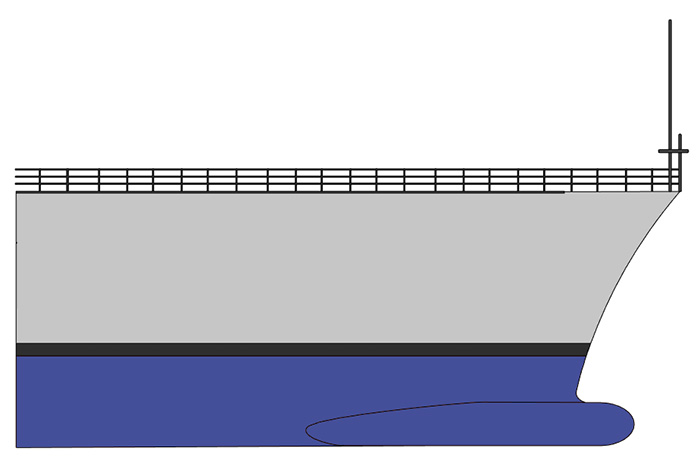
In bulbous bows, there is a protruding bulb at the bow just below the waterline. Here the water flows around the hull such that it reduces drag and increased fuel efficiency (up to 12% to 15% more than those ships that don’t have a bulbous bow), speed, range, and most importantly stability.
A bulbous bow increases the buoyancy of the front part and thereby decreases some of the up and down motion of the ship.
They are especially effective when the waterline length is longer than 15 meters and when the vessel is supposed to operate at its maximum speed most of the time. Such conditions are usually met by naval vessels, cargo ships, passenger ships, tankers, and supertaskers.
A bulbous bow would be detrimental to efficiency if used on smaller watercraft and thereby never used on powerboats, sailing boats , yachts, and other recreational boats.
The bulbous bow does its job by producing what is called the bow wave . The bulb forces the water up forming a trough and when added to a conventional bow in the right manner cancels out the wave produced by it, hence reducing the vessel’s wake.
A bulbous bow is popular in seagoing cargo ships and vessels that are larger in size.
Also read: What is a Hydrofoil Boat?
Parabolic and Cylindrical Bows
Compared to the straight sharp bow section ship designers sometimes tend to design blunt stems, thereby creating a parabolic shape. They are sometimes using in addition to bulbs to tackle the Wave Breaking Resistance. These bow designs are popular in bulk carriers of a fuller build.
Parabolic bows have a close resemblance to cylindrical ship bows since they are also designed keeping a bigger form factor in mind. They have the ability to absolutely minimize the Wave Making Resistance if proper care is taken while designing them. They are ideal for ships in fully loaded conditions.
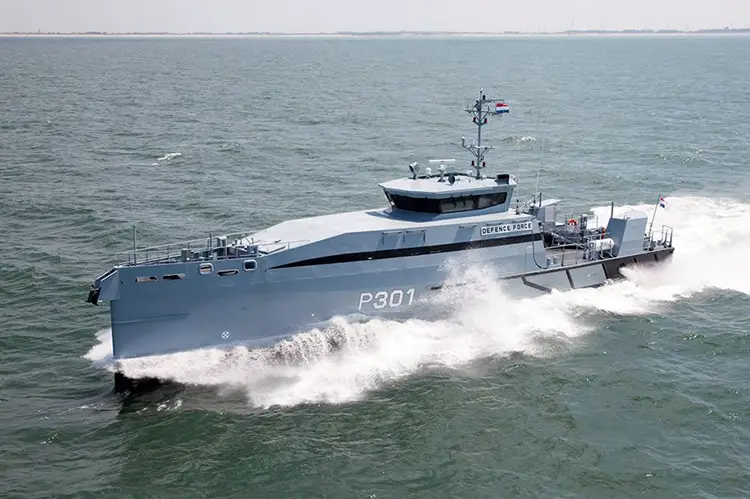
So, what is the job of an axe? To cut trees, right? The axe bow used in ships has a similar task too, that is cutting through the water. The long deep and narrow fore portion of the hull resembles an axe. The design includes a vertical stem line.
This shape allows the ship to easily pass through the waves and keeps the up and down motion of the ship to the minimum when compared to a normal bow. The lower portion of the fore-end of the hull is known as the forefoot. It remains submerged in the water and thus less open to slamming.
This has its disadvantages as well because a ship with an axe bow requires more power from the rudder while maneuvering.
Inverted Bow
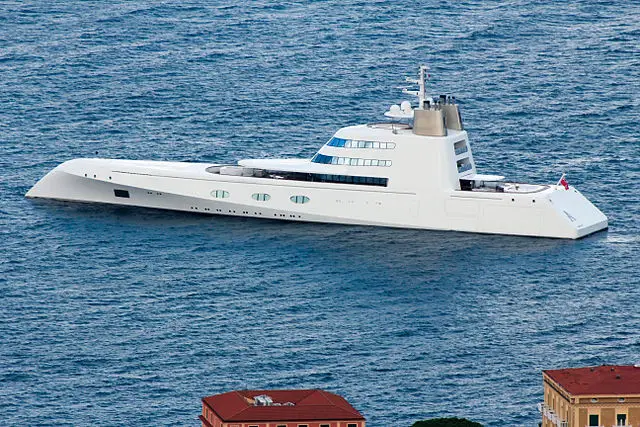
An inverted bow, often known as a reverse bow is referred to those in which the most extended point is not the top, but rather the bottom. They maximize the waterline, thereby resulting in tremendous hull speed and better hydrodynamic drag when compared to normal bows. To achieve that they sacrifice buoyancy and tend to dive under the waves instead of going above.
Just like the axe bow designs the pitching (up and down motion) and slamming are much reduced resulting in a much more enjoyable journey for the crew. They are quite operable in the medium tide and are easily maneuverable.
They are fuel-efficient too. Another positive aspect of the bow is that it doubles up like a deck and can accommodate the personnel.
Previously they were popular on battleships and large cruisers. But they became unpopular when newer designs came about. This was because they were not good at tackling high waves and became wet at high speed.
However, they have re-entered the market with all glory and are used nowadays mostly in AHTS (Anchor Handling Tug Supply) vessels, Seismic Vessels, Offshore and Pipelay Vessels, drillships, etc.
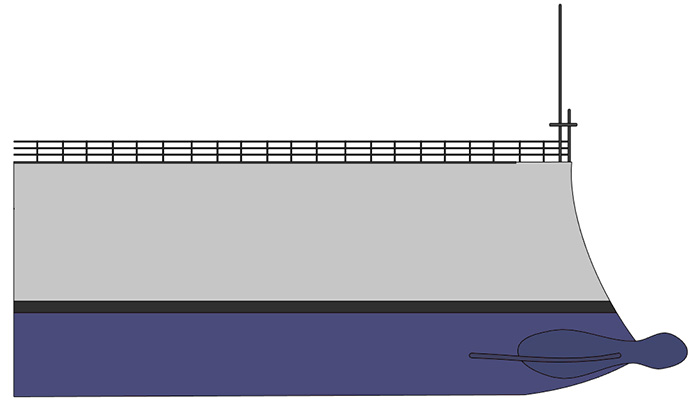
A ram bow is more of an extension that is built underwater below the hull of a ship. It is a kind of weapon which is used to pierce the hull of an enemy ship. It is not used much in today’s time but it was quite popular a few decades ago.
As we came to know earlier almost all possible combinations of bow designs have been attempted and so any bow that you come across must either be present in this list or would be the combination of the ones present here.
Similar Posts
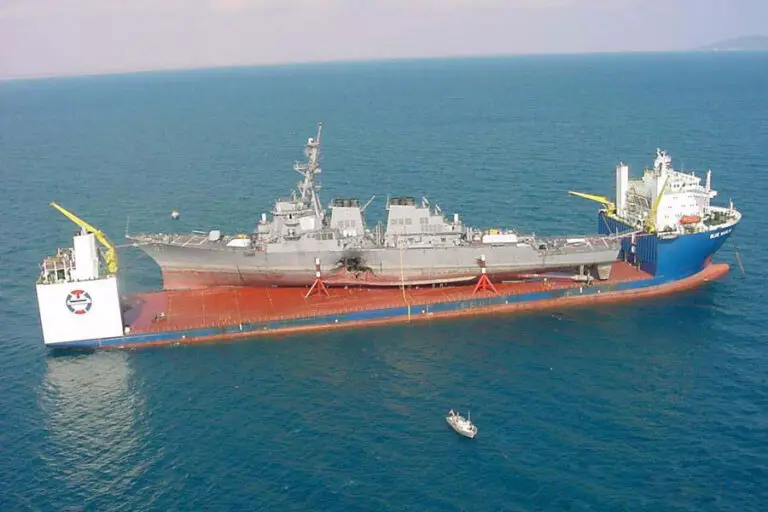
M/V Blue Marlin: Heavy Lift Vessel
Passenger ships and cargo ships sure help us carry huge loads over wide areas. But what happens when they themselves need to be transported from one area to another? This is when float-on/float-off (Flo-Flo) ships or Heavy Lift Vessels like MV Blue Marlin come in handy. A terrorist attack in the year 2000 destroyed one…
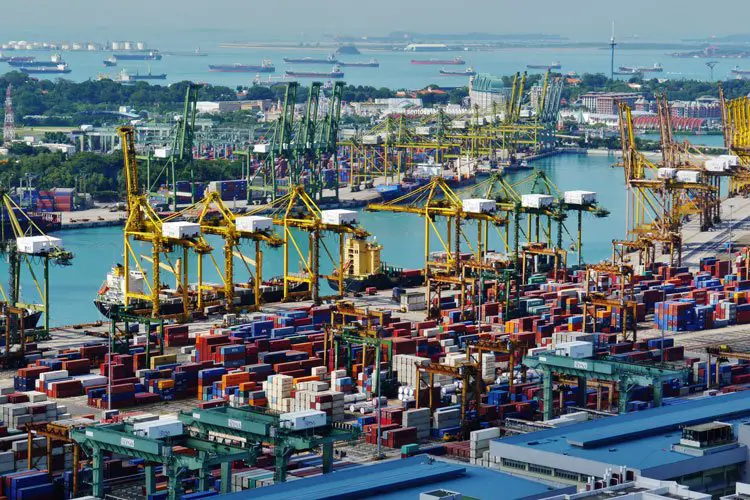
Major Container Ports in the World
Container ports (also known as container terminals) are specialized marine port facilities that focus on container shipping and transshipment. Terminals are crucial in the global logistics and supply chain business because they determine the speed at which commerce and trade may occur. Terminals that are efficient and streamlined run smoothly, minimizing ship wait times and…
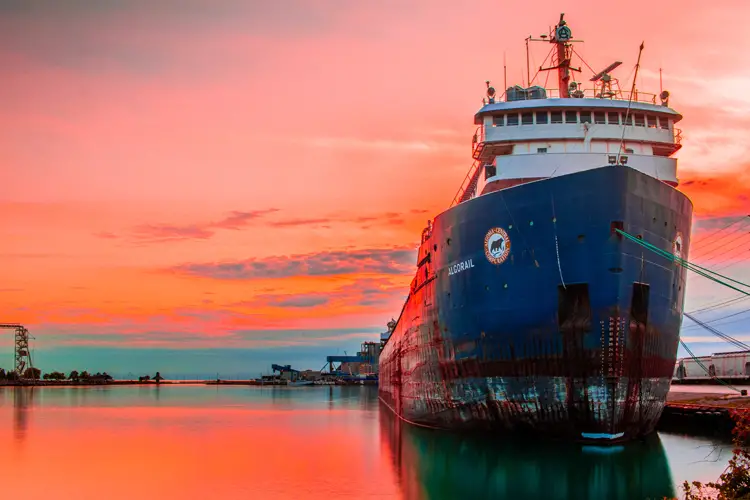
How Does the Corrosion Process Affect Ships?
Boats constantly interact with water, making them susceptible to damage at sea. While ship operators have numerous duties, watching for and preventing corrosion is high on the list. Corrosion causes ship parts to deteriorate over time, compromising the boat’s integrity and leaving occupants vulnerable to accidents. Longevity and efficiency are crucial for ships, considering today’s…
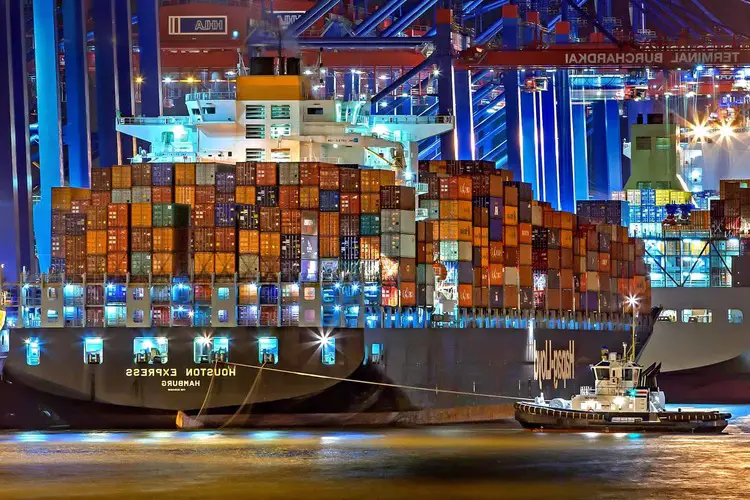
What Are Cargo Ships?
What Are Cargo Ships? Ships that deal with the transportation of heavy goods and other material from one place to another are known as cargo ships or freighters. Since shipping is the most popular form of transporting goods thousands of them sail the seas all through the day. They are equipped with a crane and…

Online Maritime Forums and Discussion Boards
The marine shipping industry is very vast and fast-changing. With so much news and developments, it is very necessary that for seafarers have an online space like maritime forums or discussion boards to get their queries answered, issues solved, or discuss the industry. The problems have increased due to the Covid situation all over the…
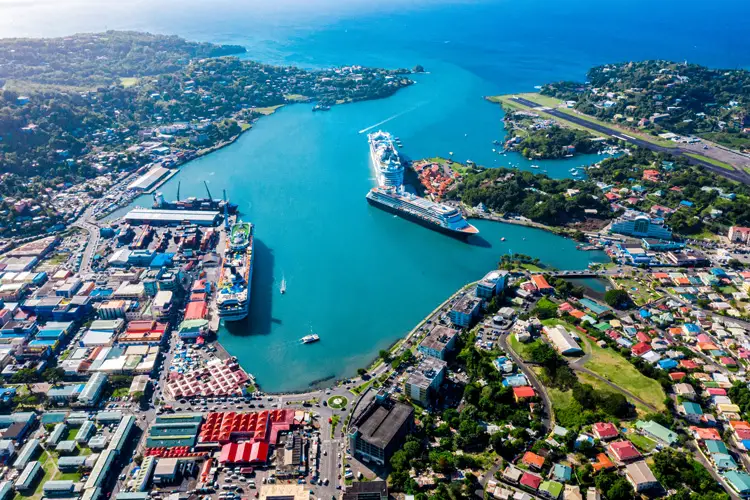
Outer Port Limit: Definition & Importance
Outer Port limit (OPL) is the limit of a port’s jurisdiction or control in a harbor or coastal area. Ports often have defined areas within which they exercise authority and provide services to ships entering or departing the port. The outer port limit could mark the boundary beyond which ships are considered to be in…
What is the name of a measurement from the bow of the boat to the waterline.
I’d call it overhang
Leave a Reply Cancel reply
Your email address will not be published. Required fields are marked *
Save my name, email, and website in this browser for the next time I comment.
This website uses cookies to improve your experience. We'll assume you're ok with this, but you can opt-out if you wish. Read More

The global authority in superyachting
- NEWSLETTERS
- Yachts Home
- The Superyacht Directory
- Yacht Reports
- Brokerage News
- The largest yachts in the world
- The Register
- Yacht Advice
- Yacht Design
- 12m to 24m yachts
- Monaco Yacht Show
- Builder Directory
- Designer Directory
- Interior Design Directory
- Naval Architect Directory
- Yachts for sale home
- Motor yachts
- Sailing yachts
- Explorer yachts
- Classic yachts
- Sale Broker Directory
- Charter Home
- Yachts for Charter
- Charter Destinations
- Charter Broker Directory
- Destinations Home
- Mediterranean
- South Pacific
- Rest of the World
- Boat Life Home
- Owners' Experiences
- Interiors Suppliers
- Owners' Club
- Captains' Club
- BOAT Showcase
- Boat Presents
- Events Home
- World Superyacht Awards
- Superyacht Design Festival
- Design and Innovation Awards
- Young Designer of the Year Award
- Artistry and Craft Awards
- Explorer Yachts Summit
- Ocean Talks
- The Ocean Awards
- BOAT Connect
- Between the bays
- Golf Invitational
- Boat Pro Home
- Pricing Plan
- Superyacht Insight
- Product Features
- Premium Content
- Testimonials
- Global Order Book
- Tenders & Equipment
How to make a better yacht bow
When asked most seafarers say that a bow’s job is to enable a vessel to pierce through waves, slides over waves, keep water off the foredeck, or even that it’s just a place to put the anchor and chain. But few realise that the bow shapes the waves that flow alongside the vessel. A badly designed bow will create unnecessary drag; while a good one will cut resistance and increase comfort.
Half-angle of entry
In most cases, the criteria for the design of the bow begins with the half-angle of entry. This is the naval architect’s term for the more commonly known ‘horizontal bow angle at the waterline’.
A yacht with a large half-angle of entry will slam into, or at least fight, waves often throwing a lot of spray and green water ahead of it. A vessel with a fine entry and narrow half-angle will slide right through a wave with little resistance.
As a yacht’s half-angle of entry increases, the bow becomes more prone to slamming into waves, which in turn, requires more power to keep the yacht moving steadily into the sea and tends to increase pitching.
The angle of entry at the bow is defined by the yacht’s speed and function. In a sailing yacht, the half-angle might be between 10 and 20 degrees, with 10 degrees being a fine entry and 20 degrees being more suited for a slower displacement yacht.
On a motor yacht a fine angle of entry, say 12 degrees, is suited to high-speed semi-displacement style yachts, whereas a normal half-angle is between 18 to 24 degrees.
A very fine half-angle – less than 10 degrees – is to be avoided. It makes the bow narrow and reduces the forward volume of the hull forcing lockers, gear and equipment aft. That said, a long, narrow vessel will have a finer angle of entry than a short, wide vessel, so a specific half-angle of entry should only be used as a comparison factor on vessels of similar length and beam.
The widest half-angles of entry – from 30 degrees to more than 40 degrees – are rarely found on yachts, but can be seen on scow-type barges that move at very slow speeds and throw a lot of water ahead of the bow. These cargo carrying vessels don’t have passengers and move slowly, so wave impacts and slamming can be accepted.
However, if the wave is very large and the yacht has a narrow half-angle, the wave might simply rise up and wash across the deck. To eliminate this designers often flare the upper bow so the rising wave crest is turned back into the ocean.
The most extreme example is what has become known as the ‘Carolina flare’ on convertible sportfishermen built on the Outer Banks
Types of bows
Designed originally to combat the waves off the Carolina inlets, the so-called Carolina flared bow is often attributed to sportfishing boats built by Buddy Davis and the others of The Outer Banks. The idea is that a fine angle of entry drives into the waves, but as wave size increases the flare rises up over them, throwing the water back into the ocean without getting the deck wet.
Typically, a flared bow will often have a chine or two low on the profile to 'break' the flow of water up the sides of the flare and help direct water away from the bow. In terms of propulsion, the gradual increase in buoyancy from a flared bow ensures that a wave does not impact the bow with a hard crash, but is gently turned aside while the bow lifts to the wave.
This type of bow usually has a chine or lifting strakes carried well forward which also helps throw water to one side and provides additional buoyancy as the bow dives into a wave. The force of the bounce increases with depth and flare angle.
The biggest drawback of this type of the Carolina Flared bow is that, as the yacht slams into a wave, the gradual immersion of the flare causes the bow to pitch upward (vertical acceleration), making the entire yacht pitch, plus the vessel slows down as it pitches requiring more power (read higher fuel consumption) as it drives ahead.
Another drawback is that should the bow submerge, it acts like a giant scoop to dig into the water and throw it across the deck. For this reason, some builders incorporate considerable camber to the foredeck.
When designing such a bow, the designer needs to have a pretty good idea of the height of the waves the vessel is likely to encounter.
Bulbous bows
Bulbous bows are generally only found on displacement hulled yachts – that is, yachts that will not exceed about 1.5 x √LWL, or the Froude number for that hull. Marlow yachts, which are semi-displacement, have an option for a small, delta-shaped bulb that is flat on top and V-shaped below to both break the water and offer some resistance to pitching when performing above displacement speeds. (Bulbous bows work best when the yacht is moving at .9 to 1.2 x √LWL.)
The idea of the bulbous bow is that the wave generated by the bulb reduces the size of the bow wave and hence lowers the resistance of the entire hull. The size of the bulb is most often determined by tank testing when the shape of the bow wave and the bulb’s cancelling effect can be clearly demonstrated, but in general terms, the larger the bulb is, the greater the reduction in resistance as long as the yacht is moving in a relatively flat sea. When the vessel is pitching, the bulb can actually increase hull resistance.
However, a designer needs to be aware of the interplay between the size of the bulb and the anchor handling gear. It would not do to bounce the anchor off the bulb every time the yacht is anchored.
Japanese researchers have found that a bulbous bow along with a slight reduction in the hull waterline beam just aft of the bow, will reduce hull resistance even farther, but at the cost of a reduction in cargo carrying ability and more complexity in the vessel’s construction.
Types of bows (continued)
The opposite of the flared bow is the Axe bow, such as the scimitar bow on the Amel 199. Here where instead of increasing the flare above the water, a very narrow half-angle of entry is maintained from hull bottom to the deck, but extra buoyancy is built in below the waterline with a deeper forefoot, and the sheerline forward is raised against green water on deck.
This type of hull has with lower resistance and creates less pitching in a seaway than a flared bow. Although this shape of bow cleaves waves, it is wet in a seaway.
Experiments in The Netherlands have shown that instead of increasing buoyancy by flaring the bow above the water surface, axe bows increases buoyancy by bringing the underwater bow profile downwards and raising the sheer at the bow.
Not only do these features lengthen the vessel considerably, but they also make it easier to drive into head seas, requiring less power. In addition, it has been suggested that up to 20 per cent lower fuel consumption in head seas can be achieved because the bow does not have the vertical accelerations of a flared bow.
A relatively new trend for larger craft is the scow bow. It has been a fixture on Great Lakes A and C class sailing scows for many years, but its potential was suddenly realised when a Mini-Transat boat with a scow bow handily won the race. Now, designers Reichel-Pugh have designed a 27.4m sailing yacht with a scow bow.
This type of bow carries beam well forward with the intent that the waterline length is increased as the boat heels. The major drawback of scow bows is they slam when upright and on a large yacht, that might be more than the owner is willing to accept.
Wave piercers
The totally opposite look to the Apple Cheek bow is the Wave Piercing bow as used by Craig Loomes Design of New Zealand and others on several superyacht and fast ferry designs.
The idea behind this bow is that the extended sponsons on each side of the catamaran or trimaran hull pierce the waves to reduce pitching in heavy seas. In this style of yacht, the main hulls have less buoyancy forward to allow it to slide through the wave rather than slam into it. By sliding through the waves, less engine power is required and the pitching of the yacht is lower.
The bow is an essential feature of any modern yacht. Elongated bows such as the wave-piercing bow, reverse or axe bow lengthen the waterline and make the angle of entry finer, decreasing the hull resistance of faster vessels and reducing pitching in a seaway. However, the longer waterline can make it harder for the vessel to turn. Meanwhile, bulbous bows decrease the size of the bow wave and consequently reduce hull resistance for vessels that operate at a set displacement speed and load.
A designer should pick the bow shape that is best suited for the desired speed, shape and pitching characteristics in a seaway.
More stories
Most popular, from our partners, sponsored listings.

My Cruiser Life Magazine
Basics of Sailboat Hull Design – EXPLAINED For Owners
There are a lot of different sailboats in the world. In fact, they’ve been making sailboats for thousands of years. And over that time, mankind and naval architects (okay, mostly the naval architects!) have learned a thing or two.
If you’re wondering what makes one sailboat different from another, consider this article a primer. It certainly doesn’t contain everything you’d need to know to build a sailboat, but it gives the novice boater some ideas of what goes on behind the curtain. It will also provide some tips to help you compare different boats on the water, and hopefully, it will guide you towards the sort of boat you could call home one day.
Table of Contents
Displacement hulls, semi displacement hulls, planing hulls, history of sailboat hull design, greater waterline length, distinctive hull shape and fin keel designs, ratios in hull design, the hull truth and nothing but the truth, sail boat hull design faqs.

Basics of Hull Design
When you think about a sailboat hull and how it is built, you might start thinking about the shape of a keel. This has certainly spurred a lot of different designs over the years, but the hull of a sailboat today is designed almost independently of the keel.
In fact, if you look at a particular make and model of sailboat, you’ll notice that the makers often offer it with a variety of keel options. For example, this new Jeanneau Sun Odyssey comes with either a full fin bulb keel, shallow draft bulb fin, or very shallow draft swing keel. Where older long keel designs had the keel included in the hull mold, today’s bolt-on fin keel designs allow the manufacturers more leeway in customizing a yacht to your specifications.
What you’re left with is a hull, and boat hulls take three basic forms.
- Displacement hull
- Semi-displacement hulls
- Planing hulls
Most times, the hull of a sailboat will be a displacement hull. To float, a boat must displace a volume of water equal in weight to that of the yacht. This is Archimedes Principle , and it’s how displacement hulled boats get their name.
The displacement hull sailboat has dominated the Maritimes for thousands of years. It has only been in the last century that other designs have caught on, thanks to advances in engine technologies. In short, sailboats and sail-powered ships are nearly always displacement cruisers because they lack the power to do anything else.
A displacement hull rides low in the water and continuously displaces its weight in water. That means that all of that water must be pushed out of the vessel’s way, and this creates some operating limitations. As it pushes the water, water is built up ahead of the boat in a bow wave. This wave creates a trough along the side of the boat, and the wave goes up again at the stern. The distance between the two waves is a limiting factor because the wave trough between them creates a suction.
This suction pulls the boat down and creates drag as the vessel moves through the water. So in effect, no matter how much power is applied to a displacement hulled vessel, it cannot go faster than a certain speed. That speed is referred to as the hull speed, and it’s a factor of a boat’s length and width.
For an average 38 foot sailboat, the hull speed is around 8.3 knots. This is why shipping companies competed to have the fastest ship for many years by building larger and larger ships.
While they might sound old-school and boring, displacement hulls are very efficient because they require very little power—and therefore very little fuel—to get them up to hull speed. This is one reason enormous container ships operate so efficiently.
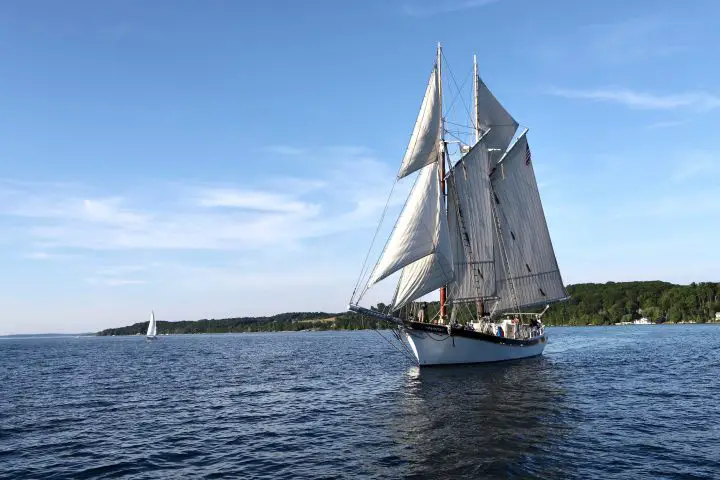
Of course, living in the 21st century, you undoubtedly have seen boats go faster than their hull speed. Going faster is simply a matter of defeating the bow wave in one way or another.
One way is to build the boat so that it can step up onto and ride the bow wave like a surfer. This is basically what a semi-displacement hull does. With enough power, this type of boat can surf its bow wave, break the suction it creates and beat its displacement hull speed.
With even more power, a boat can leave its bow wave in the dust and zoom past it. This requires the boat’s bottom to channel water away and sit on the surface. Once it is out of the water, any speed is achievable with enough power.
But it takes enormous amounts of power to get a boat on plane, so planing hulls are hardly efficient. But they are fast. Speedboats are planing hulls, so if you require speed, go ahead and research the cost of a speedboat .
The most stable and forgiving planing hull designs have a deep v hull. A very shallow draft, flat bottomed boat can plane too, but it provides an unforgiving and rough ride in any sort of chop.
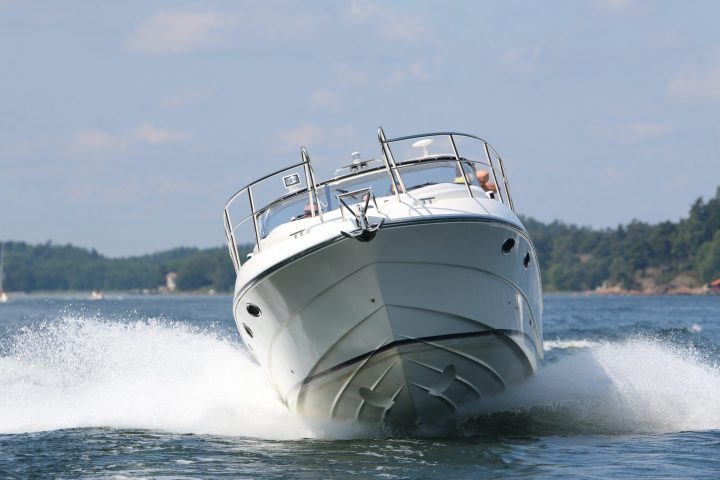
If you compare the shapes of the sailboats of today with the cruising boat designs of the 1960s and 70s, you’ll notice that quite a lot has changed in the last 50-plus years. Of course, the old designs are still popular among sailors, but it’s not easy to find a boat like that being built today.
Today’s boats are sleeker. They have wide transoms and flat bottoms. They’re more likely to support fin keels and spade rudders. Rigs have also changed, with the fractional sloop being the preferred setup for most modern production boats.
Why have boats changed so much? And why did boats look so different back then?
One reason was the racing standards of the day. Boats in the 1960s were built to the IOR (International Offshore Rule). Since many owners raced their boats, the IOR handicaps standardized things to make fair play between different makes and models on the racecourse.
The IOR rule book was dense and complicated. But as manufacturers started building yachts, or as they looked at the competition and tried to do better, they all took a basic form. The IOR rule wasn’t the only one around . There were also the Universal Rule, International Rule, Yacht Racing Association Rul, Bermuda Rule, and a slew of others.
Part of this similarity was the rule, and part of it was simply the collective knowledge and tradition of yacht building. But at that time, there was much less distance between the yachts you could buy from the manufacturers and those setting off on long-distance races.
Today, those wishing to compete in serious racing a building boat’s purpose-built for the task. As a result, one-design racing is now more popular. And similarly, pleasure boats designed for leisurely coastal and offshore hops are likewise built for the task at hand. No longer are the lines blurred between the two, and no longer are one set of sailors “making do” with the requirements set by the other set.
Modern Features of Sailboat Hull Design
So, what exactly sets today’s cruising and liveaboard boats apart from those built-in decades past?
Today’s designs usually feature plumb bows and the maximum beam carried to the aft end. The broad transom allows for a walk-through swim platform and sometimes even storage for the dinghy in a “garage.”
The other significant advantage of this layout is that it maximizes waterline length, which makes a faster boat. Unfortunately, while the boats of yesteryear might have had lovely graceful overhangs, their waterline lengths are generally no match for newer boats.
The wide beam carried aft also provides an enormous amount of living space. The surface area of modern cockpits is nothing short of astounding when it comes to living and entertaining.
If you look at the hull lines or can catch a glimpse of these boats out of the water, you’ll notice their underwater profiles are radically different too. It’s hard to find a full keel design boat today. Instead, fin keels dominate, along with high aspect ratio spade rudders.
The flat bottom boats of today mean a more stable boat that rides flatter. These boats can really move without heeling over like past designs. Additionally, their designs make it possible in some cases for these boats to surf their bow waves, meaning that with enough power, they can easily achieve and sometimes exceed—at least for short bursts—their hull speeds. Many of these features have been found on race boats for decades.
There are downsides to these designs, of course. The flat bottom boats often tend to pound when sailing upwind , but most sailors like the extra speed when heading downwind.
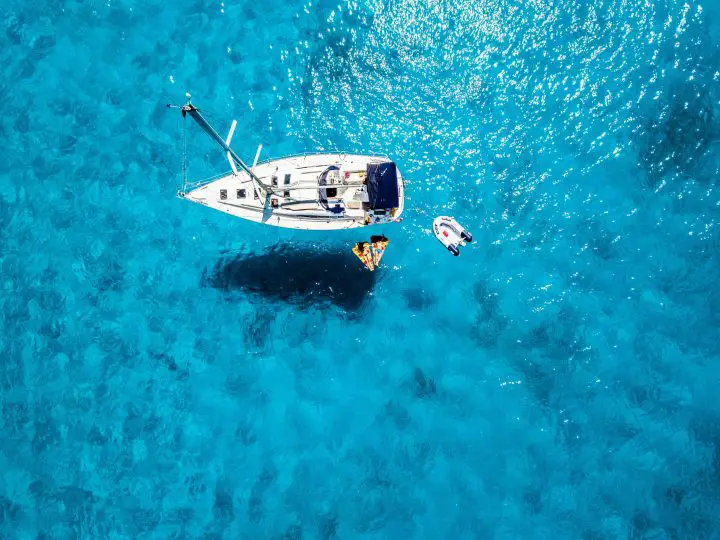
How Do You Make a Stable Hull
Ultimately, the job of a sailboat hull is to keep the boat afloat and create stability. These are the fundamentals of a seaworthy vessel.
There are two types of stability that a design addresses . The first is the initial stability, which is how resistant to heeling the design is. For example, compare a classic, narrow-beamed monohull and a wide catamaran for a moment. The monohull has very little initial stability because it heels over in even light winds. That doesn’t mean it tips over, but it is relatively easy to make heel.
A catamaran, on the other hand, has very high initial stability. It resists the heel and remains level. Designers call this type of stability form stability.
There is also secondary stability, or ultimate stability. This is how resistant the boat is to a total capsize. Monohull sailboats have an immense amount of ballast low in their keels, which means they have very high ultimate stability. A narrow monohull has low form stability but very high ultimate stability. A sailor would likely describe this boat as “tender,” but they would never doubt its ability to right itself after a knock-down or capsize.
On the other hand, the catamaran has extremely high form stability, but once the boat heels, it has little ultimate stability. In other words, beyond a certain point, there is nothing to prevent it from capsizing.
Both catamarans and modern monohulls’ hull shapes use their beams to reduce the amount of ballast and weight . A lighter boat can sail fast, but to make it more stable, naval architects increase the beam to increase the form stability.
If you’d like to know more about how stable a hull is, you’ll want to learn about the Gz Curve , which is the mathematical calculation you can make based on a hull’s form and ultimate stabilities.
How does a lowly sailor make heads or tails out of this? You don’t have to be a naval architect when comparing different designs to understand the basics. Two ratios can help you predict how stable a design will be .
The first is the displacement to length ratio . The formula to calculate it is D / (0.01L)^3 , where D is displacement in tons and L is waterline length in feet. But most sailboat specifications, like those found on sailboatdata.com , list the D/L Ratio.
This ratio helps understand how heavy a boat is for its length. Heavier boats must move more water to make way, so a heavy boat is more likely to be slower. But, for the ocean-going cruiser, a heavy boat means a stable boat that requires much force to jostle or toss about. A light displacement boat might pound in a seaway, and a heavy one is likely to provide a softer ride.
The second ratio of interest is the sail area to displacement ratio. To calculate, take SA / (D)^0.67 , where SA is the sail area in square feet and D is displacement in cubic feet. Again, many online sites provide the ratio calculated for specific makes and models.
This ratio tells you how much power a boat has. A lower ratio means that the boat doesn’t have much power to move its weight, while a bigger number means it has more “get up and go.” Of course, if you really want to sail fast, you’d want the boat to have a low displacement/length and a high sail area/displacement.
Multihull Sailboat Hulls
Multihull sailboats are more popular than ever before. While many people quote catamaran speed as their primary interest, the fact is that multihulls have a lot to offer cruising and traveling boaters. These vessels are not limited to coastal cruising, as was once believed. Most sizable cats and trimarans are ocean certified.
Both catamarans and trimaran hull designs allow for fast sailing. Their wide beam allows them to sail flat while having extreme form stability.
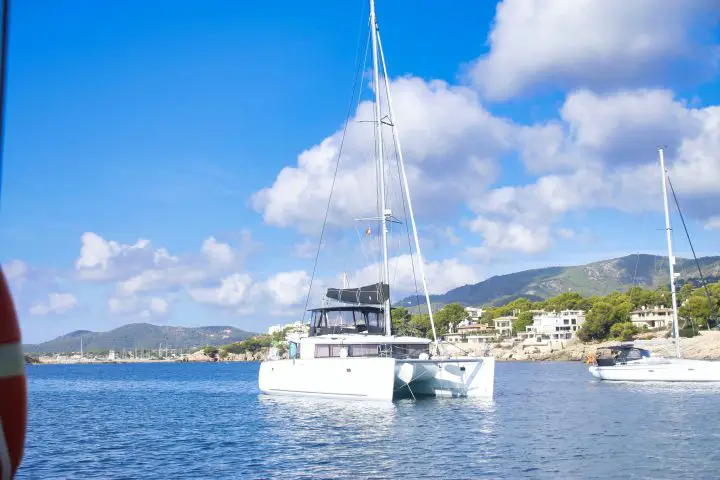
Catamarans have two hulls connected by a large bridge deck. The best part for cruisers is that their big surface area is full of living space. The bridge deck usually features large, open cockpits with connecting salons. Wrap around windows let in tons of light and fresh air.
Trimarans are basically monohulls with an outrigger hull on each side. Their designs are generally less spacious than catamarans, but they sail even faster. In addition, the outer hulls eliminate the need for heavy ballast, significantly reducing the wetted area of the hulls.
Boaters and cruising sailors don’t need to be experts in yacht design, but having a rough understanding of the basics can help you pick the right boat. Boat design is a series of compromises, and knowing the ones that designers and builders take will help you understand what the boat is for and how it should be used.
What is the most efficient boat hull design?
The most efficient hull design is the displacement hull. This type of boat sits low in the water and pushes the water out of its way. It is limited to its designed hull speed, a factor of its length. But cruising at hull speed or less requires very little energy and can be done very efficiently.
By way of example, most sailboats have very small engines. A typical 40-foot sailboat has a 50 horsepower motor that burns around one gallon of diesel every hour. In contrast, a 40-foot planing speedboat may have 1,000 horsepower (or more). Its multiple motors would likely be consuming more than 100 gallons per hour (or more). Using these rough numbers, the sailboat achieves about 8 miles per gallon, while the speedboat gets around 2 mpg.
What are sail boat hulls made of?
Nearly all modern sailboats are made of fiberglass.
Traditionally, boats were made of wood, and many traditional vessels still are today. There are also metal boats made of steel or aluminum, but these designs are less common. Metal boats are more common in expedition yachts or those used in high-latitude sailing.
Matt has been boating around Florida for over 25 years in everything from small powerboats to large cruising catamarans. He currently lives aboard a 38-foot Cabo Rico sailboat with his wife Lucy and adventure dog Chelsea. Together, they cruise between winters in The Bahamas and summers in the Chesapeake Bay.

The Definitive Guide to Sailboat Hull Types
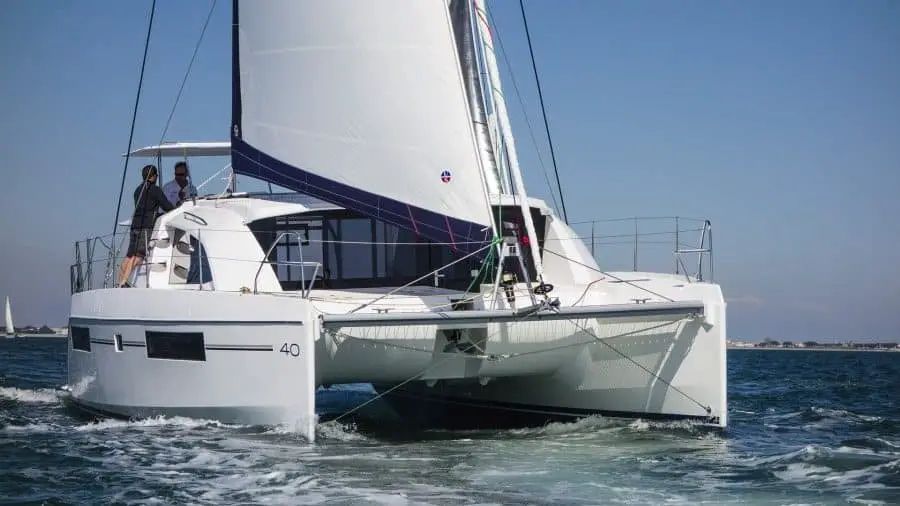
If you’ve ever been on a sailboat or any kind of boat, one of the first parts of the boat you saw was its hull and you might not have even known it.
Simply put, the hull is the bottom part of a boat that rides in and on top of the water. When a sailboat is underwater, it’s accompanied by the keel and the rudder.
Just like knowing the different types of sails , knowing the hull type on your sailboat means you’ll have a better understanding of how your boat operates while it’s out on the water.
All in all, the hull of any boat is meant to keep the boat afloat and to ensure minimum resistance against the water while being propelled forward. Now let’s dive into the different sailboat hull types and even some other types of hulls in boats in general!
Main Sailboat Hull Types
There are two main hull types that we’ll be looking at that encompass the many other types of hulls that vary from these two main types.
Depending on the type of boat you have, you’ll be floating around with one or the other. We’ll take a look at what you can expect if your boat has either of these hull types.
Displacement Hulls
The most common sailboat hull type you’ll find out there is the displacement hull, which is very effective at pushing the water aside and powering through it during forward propulsion.
A displacement hull is often found not only on sailboats, but also fishing, freight, cruise, and other larger boats.
All boats that have a displacement hull will be limited in their speed based on the waterline length of the hull. Regardless of how much power you use, whether it’s from the wind or motor, the maximum speed can’t be increased.
This is why you’ll see people mention the waterline length of a boat’s hull when putting them on the market to sell.
The big advantage of having a displacement hull is that they require far less power to get moving across the water compared to the other main hull type; the planing hull.
What this means is that your boat will be able to cruise for a long time with the same amount of energy, which also allows you to carry more items on board.
Planing Hulls
It’s almost guaranteed that your sailboat won’t have a planing hull since they’re most commonly found on powerboats and personal watercrafts (PWCs), like jet skis.
Planing hulls allow the boat to lift itself out of the water, reducing drag and increasing the speed of the boat.
Almost any boat that’s equipped with a planing hull will be able to attain a speed much greater than a boat with a displacement boat.
The main reason for this is the lift that’s produced when traveling at high speeds which reduces drag on the water.
The maximum speed of a boat with a planing hull is dependent on the horsepower of the engine and how much of the hull can be removed from the water while still cruising.
The biggest advantage of having a planing hull is that your boat will be able to pick up speed quickly and reach a greater maximum speed.
This allows for shorter journey times. However, there needs to be a source of all that energy, which comes directly from a combustion engine. The faster a boat with a planing hull goes, the larger the cost of fuel will be.
How Planing Works
The way planing works is actually pretty interesting, so I thought I’d dive into it a bit. Even though a sailboat is virtually guaranteed not to have one, it’s always nice to know how other boats operate while out on the water.
1. Displacement
Before a boat with a planing hull actually planes, it starts out acting like a displacement hull.
As a matter of fact, a boat with a planing hull needs to reach a certain speed before it starts to produce lift. Before that happens, it’s essentially a displacement hull.
While a boat with a planing hull is picking up speed and lifting itself out of the water, it’s in a plowing mode.
You’ll know when a boat is in plowing mode when the bow of the boat is elevated and the boat is throwing a relatively large wake. The goal, however, is to move from plowing mode to planing mode, which requires further acceleration.
Once the boat with a planing hull reaches a certain speed, it’ll leave plowing mode and enter planing mode.
As I already described, planing is when the hull is gliding across the water with a smaller amount of the hull dragging in the water when compared to the previous modes. Different boats will start planing when reaching different speeds.
Common Sailboat Hull Styles
Now that we’ve gone over the two main types of hulls you’ll find in sailboats and other types of boats, we have a good foundation for the hull styles you’ll commonly see when out on the water.
There are three main hull styles that you’ll see quite often, so let’s take a look at those.
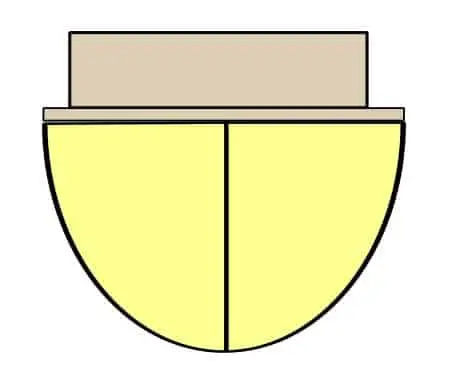
By far the most common hull style you’ll see on sailboats is the monohull, which is simply a single hull.
Traditionally, a sailboat will have a monohull and they can be found all over the place. It’s probably the style of hull that comes to most peoples’ mind when imagining a sailboat.
Monohulls on sailboats are virtually all displacement hulls. As we went over previously, this allows your sailboat to cruise for long stretches and has a greater efficiency compared to planing hulls.
However, most boats that exist on planet earth are monohulls, including powerboats, which can also be of the planing hull type.
When it comes to a monohull on a sailboat, the only way it can keep its stability is to have a proper keel attached to it.
A keel is a wing-like object that sticks out of the bottom of the hull in the water and provides a sailboat with ballast for stability. It’s important to understand how a keel works when operating a sailboat with a monohull since it’s one of the main reasons a sailboat can move forward without tipping.
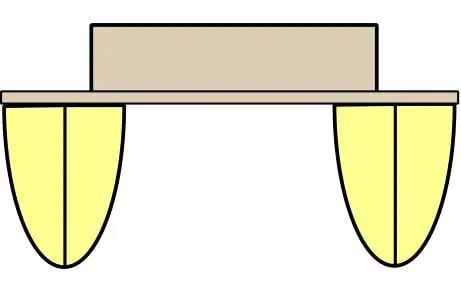
There are certainly a lot of monohull sailboats out there, but there’s no doubt that you’ll also see your fair share of catamarans.
Catamarans are sailboats with two hulls and operate quite differently than their monohull cousin. Catamarans are known to be fast and are likely to outrun most monohull sailboats.
Unlike monohull sailboats, catamarans can be fitted with displacement hulls as well as planing hulls. However, even if they have a planing hull they can still produce a relatively good amount of cruising time and do so rather efficiently.
Catamarans are a bit different than monohulls in the sense that they can reach greater speeds. There are several reasons for this. For one, a catamaran doesn’t need a ballast for stability since the broad stance between the two hulls provides enough stability.
This means there’s no need for a large, heavy keel. Second, they’re often built out of lightweight materials that allow the boat to reach a higher maximum speed compared to heavier sailboats.
Also, if a catamaran has a planing hull, it’ll have the ability to produce lift resulting in reduced drag on the water and even greater speeds.
Unfortunately, catamarans do have the disadvantage of being more likely to capsize in unwanted high-wind situations.
Also, it’s very difficult for a catamaran to recover from capsizing as opposed to a monohull sailboat that has a good ballast from its keel.
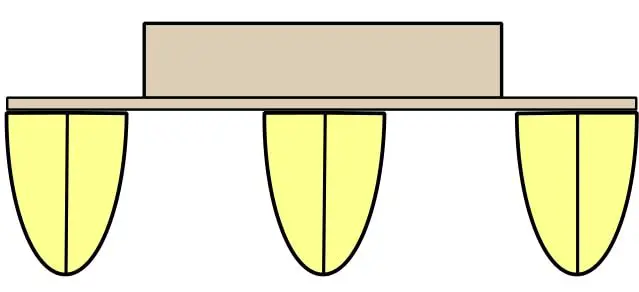
You might have already guessed from the name, but I’ll state the obvious anyway. A trimaran is exactly like a catamaran but with three hulls instead of two.
Often times you’ll see a trimaran look like a monohull sailboat with a pair of hulls attached to its side.
Similar to a catamaran, trimarans can hit speeds much greater than your average monohull sailboat. As a matter of fact, they’re known to be “unsinkable” under the situation that the hulls on the port and starboard side of the central hull are completely filled up with water.
One of the coolest aspects of having a trimaran is that when it has a planing hull and/or a hydrofoil, the trimaran’s central hull will lift completely out of the water.
This gives it the effect that it’s floating across the air, which is the result of lift produced from the planing hull or a hydrofoil. It’s very cool to see this!
Sailboat Hull Bottoms
Apart from the main boat hull styles, like the monohull, catamaran, and trimaran, there are hull bottoms that pop up in the world of boating that can differ in style and function.
These hull bottoms are more of a deeper look at the hulls of a monohull, catamaran, or trimaran, so you can think of them more as a feature of any of the previously mentioned styles of hull.
Flat Bottom
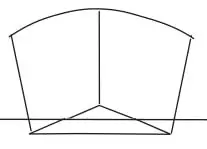
A very common hull bottom for boats that are derived from the planing hull type is a flat bottom hull.
The flat bottom hull is considered to be one of the less stable styles of hulls, especially when confronted with rough waters.
However, you’ll often find them on boats that don’t necessarily ride in these situations, including fishing or taxi areas.
- Good for small lakes and rivers due to having a shallow draft.
- Able to hit relatively high speeds once entering planing mode.
Disadvantages
- Not good at handling choppy waters resulting in a rough ride.
Round Bottom
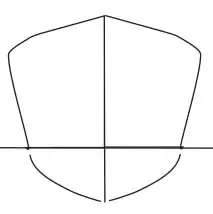
When it comes to sailboats, you’re most likely going to run into monohull sailboats that have a displacement style hull with a round bottom.
While these are the most common hull bottom for sailboats, they can also be found on smaller boats that are used for fishing, canoeing, and other similar kinds of boats.
- Easily moves through the water due to being a displacement hull type.
- When accompanied by a keel, it produces a great amount of stability from the ballast.
- Without a keel, it can roll when entering and exiting the boat as well as when waves are present.
- Less maneuverable compared to other hull styles.
Deep ‘V’ Bottom
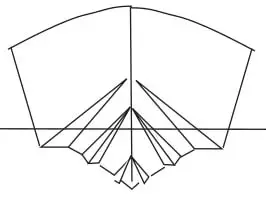
If you’re operating a powerboat, then in all likeliness your boat has a planing hull with a deep ‘V’ bottom.
Since deep ‘V’ bottoms are found on planing hulls, these types of boats will be able to pick up speed quickly and at high maximums. This is the most common setup for powerboats out on the water.
This is the most common type of powerboat hull. This hull type allows boats to move through rough water at higher speeds and they provide a smoother ride than other hull types.
- Provides a smooth ride compared to its flat bottom rival.
- Good at handling rough water.
- Requires more power to plane compared to its flat bottom rival.
- Cannot handle sharp turns very well resulting in potential rolling or banking.
Multi-Chine Bottom
We took a good look at multi-hull styles like the catamaran and the trimaran earlier, which are the exact style of hulls that have a multi-chine bottom.
A multi-chine bottom is a great example of a displacement hull on either a catamaran or trimaran as it’s the most common bottom you’ll find.
- In a multi-hull boat, it has a great amount of stability due to its wide beam.
- In a multi-hull boat, it needs a large area when either tacking or jibing.
Main Parts of a Sailboat Hull
There’s some terminology I threw around while describing the many types of hulls a sailboat and other types of boats have.
As is the case with a lot of activities, learning the terminology is just something you have to do.
Thankfully, the terminology will eventually sink in overtime and eventually you’ll be able to ring off any hull terminology that comes up.
The bow is simply the most forward part of a sailboat and, thus, the very front of the hull.
The stern, conversely to the bow, is the most backward part of a sailboat and, thus, the very end of the hull.
The port side of a hull is the left side. I always remember this with the phrase “I left my port on the table”, with the port being wine.
This just so happens to also be the side where boats will have a red light turned on at night, which is the color of port wine.
The starboard side of a hull is on the right side.
Opposite the port side, in the evening boats will have a green light turned on and will be located on the starboard side of the boat.
Fore is a sailor’s way of saying “forward”.
Aft is a sailor’s way of saying “back”.
A transom is the aft-most (see what I did there?) section of the boat that connects the port and starboard sections of the boat.
The flare of a hull is where the hull starts to form a large angle the closer the hull gets to the deck.
The waterline is the line around the hull where the water touches when under a normal load.
Waterline Length
The waterline length, once referred to as the Load Waterline Length (LWL), is the length of the hull where the waterline is located.
This is not the entire length of the boat.
Length Overall (LOA)
The length overall (LOA) is, you guessed it, the overall length of the boat. This is measured from the tip of the bow to the end of the stern.
The freeboard is the space on the hull of a boat above the waterline and below the deck.
The draft is the length from the bottom-most part of a boat (the tip of the keel on a sailboat) and the waterline.
Get the very best sailing stuff straight to your inbox
Nomadic sailing.
At Nomadic Sailing, we're all about helping the community learn all there is to know about sailing. From learning how to sail to popular and lesser-known destinations to essential sailing gear and more.
Quick Links
Business address.
1200 Fourth Street #1141 Key West, FL 33040 United States
Copyright © 2024 Nomadic Sailing. All rights reserved. Nomadic Sailing is a participant in the Amazon Services LLC Associates Program, an affiliate advertising program designed to provide a means to earn fees by linking to Amazon.com and affiliated sites.

Types of Sailboats: A Complete Guide

Last Updated by
Daniel Wade
June 15, 2022
Learning the different types of sailboats can help you identify vessels and choose the right boat.
In this article, we'll cover the most common kinds of sailboats, their origins, and what they're used for. We'll also go over the strengths and weaknesses of each design, along with when they're most useful.
The most common kind of sailboat is the sloop, as it's simple to operate and versatile. Other common sailboat types include the schooner, cutter, cat, ketch, schooner, catamaran, and trimaran. Other sailboat variations include pocket cruisers, motorsailers, displacement, and shoal-draft vessels.
The information found in this article is sourced from boat reference guides, including A Field Guide to Sailboats of North America by Richard M. Sherwood and trusted sources in the sailing community.
Table of contents
Distinguishing Types of Sailboats
In this article, we'll distinguish sailboats by traits such as their hull type, rig, and general configuration. Some sailboats share multiple characteristics with other boats but fall into a completely different category. For example, a sailboat with a Bermuda rig, a large engine, and a pilothouse could technically be called a sloop, but it's more likely a motorsailer.
When discerning sailboat type, the first most obvious place to look is the hull. If it has only one hull, you can immediately eliminate the trimaran and the catamaran. If it has two or more hulls, it's certainly not a typical monohull vessel.
The next trait to consider is the rig. You can tell a lot about a sailboat based on its rig, including what it's designed to be used for. For example, a long and slender sailboat with a tall triangular rig is likely designed for speed or racing, whereas a wide vessel with a complex gaff rig is probably built for offshore cruising.
Other factors that determine boat type include hull shape, overall length, cabin size, sail plan, and displacement. Hull material also plays a role, but every major type of sailboat has been built in both wood and fiberglass at some point.
Sailboat vs. Motorsailer
Most sailboats have motors, but most motorized sailboats are not motorsailers. A motorsailer is a specific kind of sailboat designed to run efficiently under sail and power, and sometimes both.
Most sailboats have an auxiliary engine, though these power plants are designed primarily for maneuvering. These vessels cannot achieve reasonable speed or fuel-efficiency. Motorsailers can operate like a powerboat.
Motorsailers provide great flexibility on short runs. They're great family boats, and they're popular in coastal communities with heavy boat traffic. However, these features come at a cost. Motorsailers aren't the fastest or most efficient powerboats, and they're also not the most agile sailboats. That said, they make an excellent general-purpose sailing craft.
Monohull vs. Multi-hull: Which is Better?
Multihull sailboats are increasingly popular, thanks to advances and lightweight materials, and sailboat design. But are they better than traditional sailboats? Monohulls are easier to maintain and less expensive, and they offer better interior layouts. Multihulls are more stable and comfortable, and they're significantly easier to control. Multihull sailboats also have a speed advantage.
Monohull Sailboats
A monohull sailboat is a traditionally-shaped vessel with a single hull. The vast majority of consumer sailboats are monohulls, as they're inexpensive to produce and easy to handle. Monohull sailboats are proven and easy to maintain, though they lack the initial stability and motion comfort of multi-hull vessels.
Monohull sailboats have a much greater rig variety than multi-hull sailboats. The vast majority of multihull sailboats have a single mast, whereas multi-masted vessels such as yawls and schooners are always monohulls. Some multi-hull sailboats have side-by-side masts, but these are the exception.
Catamaran Sailboats
The second most common sailboat configuration is the catamaran. A catamaran is a multihull sailboat that has two symmetrical hulls placed side-by-side and connected with a deck. This basic design has been used for hundreds of years, and it experienced a big resurgence in the fiberglass boat era.
Catamarans are fast, efficient, and comfortable. They don't heel very much, as this design has excellent initial stability. The primary drawback of the catamaran is below decks. The cabin of a catamaran is split between both hulls, which often leaves less space for the galley, head, and living areas.
Trimaran Sailboats
Trimarans are multi-hull sailboats similar to catamarans. Trimarans have three hulls arranged side-by-side. The profile of a trimaran is often indistinguishable from a catamaran.
Trimarans are increasingly popular, as they're faster than catamarans and monohulls and considerably easier to control. Trimarans suffer from the same spatial limitations as catamarans. The addition of an extra hull adds additional space, which is one reason why these multi-hull vessels are some of the best-selling sailboats on the market today.
Sailboat Rig Types
Rigging is another way to distinguish sailboat types. The rig of a sailboat refers to it's mast and sail configuration. Here are the most common types of sailboat rigs and what they're used for.
Sloops are the most common type of sailboat on the water today. A sloop is a simple single-mast rig that usually incorporates a tall triangular mainsail and headsail. The sloop rig is easy to control, fun to sail, and versatile. Sloops are common on racing sailboats as they can sail quite close to the wind. These maneuverable sailboats also have excellent windward performance.
The sloop rig is popular because it works well in almost any situation. That said, other more complex rigs offer finer control and superior performance for some hull types. Additionally, sloops spread their entire sail area over just to canvases, which is less flexible than multi-masted rigs. The sloop is ideal for general-purpose sailing, and it's proven itself inland and offshore.
Sloop Features:
- Most popular sailboat rig
- Single mast
- One mainsail and headsail
- Typically Bermuda-rigged
- Easy to handle
- Great windward performance
- Less precise control
- Easier to capsize
- Requires a tall mast
Suitable Uses:
- Offshore cruising
- Coastal cruising
Cat (Catboat)
The cat (or catboat) is a single-masted sailboat with a large, single mainsail. Catboats have a thick forward mast, no headsail, and an exceptionally long boom. These vessels are typically gaff-rigged, as this four-edged rig offers greater sail area with a shorter mast. Catboats were popular workboats in New England around the turn of the century, and they have a large following today.
Catboats are typically short and wide, which provides excellent stability in rough coastal conditions. They're hardy and seaworthy vessels, but they're slow and not ideal for offshore use. Catboats are simple and easy to control, as they only have a single gaff sail. Catboats are easy to spot thanks to their forward-mounted mast and enormous mainsail.
Catboat Features:
- Far forward-mounted single mast
- Large four-sided gaff sail
- Short and wide with a large cockpit
- Usually between 20 and 30 feet in length
- Excellent workboats
- Tough and useful design
- Great for fishing
- Large cockpit and cabin
- Not ideal for offshore sailing
- Single sail offers less precise control
- Slow compared to other rigs
- Inland cruising
At first glance, a cutter is difficult to distinguish from a sloop. Both vessels have a single mast located in roughly the same position, but the sail plan is dramatically different. The cutter uses two headsails and often incorporates a large spar that extends from the bow (called a bowsprit).
The additional headsail is called a staysail. A sloop only carries one headsail, which is typically a jib. Cutter headsails have a lower center of gravity which provides superior performance in rough weather. It's more difficult to capsize a cutter, and they offer more precise control than a sloop. Cutters have more complex rigging, which is a disadvantage for some people.
Cutter Features:
- Two headsails
- Long bowsprit
- Similar to sloop
- Gaff or Bermuda-rigged
- Fast and efficient
- Offers precise control
- Superior rough-weather performance
- More complex than the sloop rig
- Harder to handle than simpler rigs
Perhaps the most majestic type of sailboat rig, the schooner is a multi-masted vessel with plenty of history and rugged seaworthiness. The schooner is typically gaff-rigged with short masts and multiple sails. Schooners are fast and powerful vessels with a complex rig. These sailboats have excellent offshore handling characteristics.
Schooners have a minimum of two masts, but some have three or more. The aftermost large sail is the mainsail, and the nearly identical forward sail is called the foresail. Schooners can have one or more headsail, which includes a cutter-style staysail. Some schooners have an additional smaller sale aft of the mainsail called the mizzen.
Schooner Features:
- At least two masts
- Usually gaff-rigged
- One or more headsails
- Excellent offshore handling
- Precise control
- Numerous sail options (headsails, topsails, mizzen)
- Fast and powerful
- Complex and labor-intensive rig
- Difficult to adjust rig single-handed
- Offshore fishing
Picture a ketch as a sloop or a cutter with an extra mast behind the mainsail. These vessels are seaworthy, powerful, excellent for offshore cruising. A ketch is similar to a yawl, except its larger mizzen doesn't hang off the stern. The ketch is either gaff or Bermuda-rigged.
Ketch-rigged sailboats have smaller sails, and thus, shorter masts. This makes them more durable and controllable in rough weather. The mizzen can help the boat steer itself, which is advantageous on offshore voyages. A ketch is likely slower than a sloop or a cutter, which means you aren't likely to find one winning a race.
Ketch Features:
- Headsail (or headsails), mainsail, and mizzen
- Mizzen doesn't extend past the rudder post
- Good offshore handling
- Controllable and mild
- Shorter and stronger masts
- Easy self-steering
- Slower than sloops and cutters
- Less common on the used market
A dinghy is a general term for a small sailboat of fewer than 28 feet overall. Dinghys are often dual-power boats, which means they usually have oars or a small outboard in addition to a sail. These small boats are open-top and only suitable for cruising in protected waters. Many larger sailboats have a deployable dinghy on board to get to shore when at anchor.
Dinghy Features:
- One or two people maximum capacity
- Easy to sail
- Works with oars, sails, or an outboard
- Great auxiliary boat
- Small and exposed
- Not suitable for offshore use
- Going from anchor to shore
- Protected recreational sailing (lakes, rivers, and harbors)
Best Sailboat Type for Stability
Stability is a factor that varies widely between sailboat types. There are different types of stability, and some sailors prefer one over another. For initial stability, the trimaran wins with little contest. This is because these vessels have a very high beam-to-length ratio, which makes them much less prone to rolling. Next up is the catamaran, which enjoys the same benefit from a wide beam but lacks the additional support of a center hull section.
It's clear that in most conditions, multihull vessels have the greatest stability. But what about in rough weather? And what about capsizing? Multihull sailboats are impossible to right after a knockdown. This is where full-keel monohull sailboats excel.
Traditional vessels with deep displacement keels are the safest and most stable in rough weather. The shape, depth, and weight of their keels keep them from knocking over and rolling excessively. In many cases, these sailboats will suffer a dismasting long before a knockdown. The primary disadvantage of deep-keeled sailboats is their tendency to heel excessively. This characteristic isn't hazardous, though it can make novice sailors nervous and reduce cabin comfort while underway.
Best Sailboat Type for Offshore Cruising
The best sailboat type for offshore cruising is the schooner. These graceful aid robust vessels have proven themselves over centuries as durable and capable vessels. They typically use deep displacement keels, which makes them stable in rough weather and easy to keep on course.
That said, the full answer isn't quite so simple. Modern multihull designs are an attractive option, and they have also proven to be strong and safe designs. Multihull sailboats are an increasingly popular option for offshore sailors, and they offer comfort that was previously unknown in the sailing community.
Many sailors cross oceans in basic Bermuda-rigged monohulls and take full advantage of a fin-keel design speed. At the end of the day, the best offshore cruising sailboat is whatever you are comfortable handling and living aboard. There are physical limits to all sailboat designs, though almost any vessel can make it across an ocean if piloted by a competent skipper and crew.
Best Sailboat Type for Racing The modern lightweight Bermuda-rigged sailboat is the king of the regatta. When designed with the right kind of hull, these vessels are some of the fastest sailboats ever developed. Many boats constructed between the 1970s and today incorporate these design features due to their favorable coastal and inland handling characteristics. Even small sailboats, such as the Cal 20 and the Catalina 22, benefit from this design. These boats are renowned for their speed and handling characteristics.
Related Articles
I've personally had thousands of questions about sailing and sailboats over the years. As I learn and experience sailing, and the community, I share the answers that work and make sense to me, here on Life of Sailing.
by this author
Learn About Sailboats
Most Recent

What Does "Sailing By The Lee" Mean?
October 3, 2023

The Best Sailing Schools And Programs: Reviews & Ratings
September 26, 2023
Important Legal Info
Lifeofsailing.com is a participant in the Amazon Services LLC Associates Program, an affiliate advertising program designed to provide a means for sites to earn advertising fees by advertising and linking to Amazon. This site also participates in other affiliate programs and is compensated for referring traffic and business to these companies.
Similar Posts

Affordable Sailboats You Can Build at Home
September 13, 2023

Best Small Sailboat Ornaments
September 12, 2023

Discover the Magic of Hydrofoil Sailboats
December 11, 2023
Popular Posts

Best Liveaboard Catamaran Sailboats
December 28, 2023

Can a Novice Sail Around the World?
Elizabeth O'Malley

4 Best Electric Outboard Motors

How Long Did It Take The Vikings To Sail To England?

10 Best Sailboat Brands (And Why)
December 20, 2023

7 Best Places To Liveaboard A Sailboat
Get the best sailing content.
Top Rated Posts
Lifeofsailing.com is a participant in the Amazon Services LLC Associates Program, an affiliate advertising program designed to provide a means for sites to earn advertising fees by advertising and linking to Amazon. This site also participates in other affiliate programs and is compensated for referring traffic and business to these companies. (866) 342-SAIL
© 2024 Life of Sailing Email: [email protected] Address: 11816 Inwood Rd #3024 Dallas, TX 75244 Disclaimer Privacy Policy
- New Sailboats
- Sailboats 21-30ft
- Sailboats 31-35ft
- Sailboats 36-40ft
- Sailboats Over 40ft
- Sailboats Under 21feet
- used_sailboats
- Apps and Computer Programs
- Communications
- Fishfinders
- Handheld Electronics
- Plotters MFDS Rradar
- Wind, Speed & Depth Instruments
- Anchoring Mooring
- Running Rigging
- Sails Canvas
- Standing Rigging
- Diesel Engines
- Off Grid Energy
- Cleaning Waxing
- DIY Projects
- Repair, Tools & Materials
- Spare Parts
- Tools & Gadgets
- Cabin Comfort
- Ventilation
- Footwear Apparel
- Foul Weather Gear
- Mailport & PS Advisor
- Inside Practical Sailor Blog
- Activate My Web Access
- Reset Password
- Pay My Bill
- Customer Service

- Free Newsletter
- Give a Gift

How to Sell Your Boat

Cal 2-46: A Venerable Lapworth Design Brought Up to Date

Rhumb Lines: Show Highlights from Annapolis

Open Transom Pros and Cons

Leaping Into Lithium

The Importance of Sea State in Weather Planning

Do-it-yourself Electrical System Survey and Inspection

Install a Standalone Sounder Without Drilling

When Should We Retire Dyneema Stays and Running Rigging?

Rethinking MOB Prevention

Top-notch Wind Indicators

The Everlasting Multihull Trampoline

How Dangerous is Your Shore Power?

DIY survey of boat solar and wind turbine systems

What’s Involved in Setting Up a Lithium Battery System?

The Scraper-only Approach to Bottom Paint Removal

Can You Recoat Dyneema?

Gonytia Hot Knife Proves its Mettle

Where Winches Dare to Go

The Day Sailor’s First-Aid Kit

Choosing and Securing Seat Cushions

Cockpit Drains on Race Boats

Rhumb Lines: Livin’ the Wharf Rat Life

Re-sealing the Seams on Waterproof Fabrics

Safer Sailing: Add Leg Loops to Your Harness

Waxing and Polishing Your Boat

Reducing Engine Room Noise

Tricks and Tips to Forming Do-it-yourself Rigging Terminals

Marine Toilet Maintenance Tips

Learning to Live with Plastic Boat Bits
- Sailboat Reviews
A Stern Look at Boat Sterns
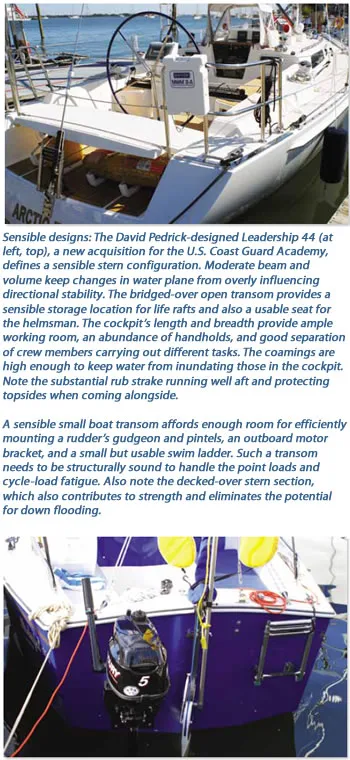
Photos by Ralph Naranjo
Nothing stereotypes a cruising sailboat more than whats going on at the bow and stern. Both ends of the boat tell a lot about cruising preferences and what assets and obstacles will arise in a seaway.
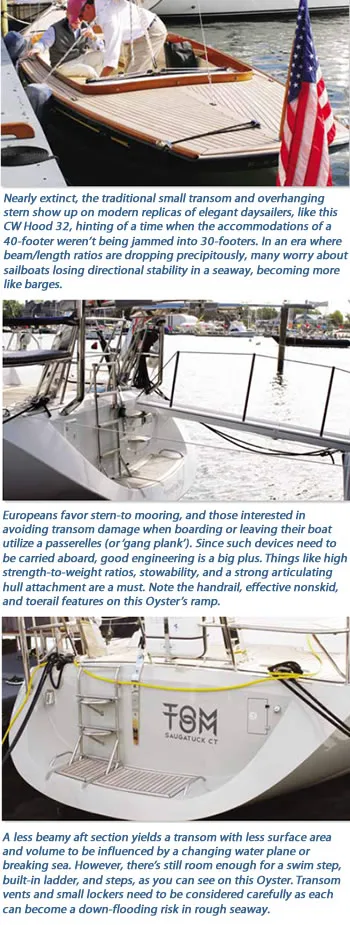
In the January 2013 issue of Practical Sailor , we took a close look at the bow and noted the trend toward plumb stems, multiple furlers, and a longer resting waterline. We also recognized the tradeoffs involved, such as the need to perch the anchor further forward on a mini sprit or small strut in order to keep the flukes from chewing away at the topsides. When it comes to ground-tackle handling, its clear that for decades, cruisers have understood and retained a commitment to anchor deployment and retrieval-and designers and builders have responded appropriately. However, an even bigger shift in yacht design has overtaken the aft end of the modern production sailboat-and the implications are hard to miss.
During our dock walks at this past years boat shows, PS editors focused on the back of the boats, and here we delve into the implications and look of modern stern design and what this means for those underway and those enjoying a remote anchorage.
More Beam Aft
The first of these is the trend toward more beam aft and its growing acceptance among racing and cruising sailors. Performance sailors see that the uptick in form stability equates to extra sail-carrying capacity and a hulls willingness to climb onto a plane during power reaches. Designers realized that placing a hydro-dynamically shaped bulb at the bottom of a very deep fin keel attached to a wide canoe-shaped hull can deliver enough secondary righting moment to make the pizza slice-shaped resting waterline adequate for offshore sailing. However, when such water-plane footprints show up in the cruising fleet, they often arrive sans deep keel and with lower ballast ratios, considerably less draft, and a shortfall in secondary righting moment.
Many naval architects see the plethora of wide, shoal-draft, sub 30-percent ballast ratio cruisers as perfectly viable inshore/coastal cruisers, but they balk when it comes to the boats appropriateness for offshore use. We agree, and in an upcoming issue, we will address making sense of stability indicators, the ISO STIX formula, and whats involved in staying right side up.
The glass half-empty squadron likes to sneer that the new ultra-wide sterns are there to expedite boarding at boat shows. But summertime, warm-weather coastal cruisers seem to like the supersized sundecks and the beckoning easy access to the water. Fewer and fewer boats provide the traditional deep well, small cockpit feel that offered kind motion and good protection from spray and breaking waves. Todays cockpits have more of a wide-open feel, and the offshore passagemaking symbol of a lean double-ender with a self-steering vane securely bolted to the trailing edge has become pass-at least, thats the case among the fleet at boat shows.
We see some significant up sides to the new trend toward connectivity to the sea and attributes like a cockpit with a picnic table. But not all of these features favor offshore passagemaking.
Wide-open Cockpits
One issue that rose above the rest is that an ideal stern section and cockpit layout for the racer is anything but the right solution for the cruiser. Crews differ in size, rail meat is an alien concept to most cruisers, and obsession over mark roundings and the speed of a sail change diminish. In some ways, its like defining the right car design for a Baja 500 and a soccer mom. Add to this the inshore and offshore renditions of cruising, and its a bit of a surprise that all user groups are being led to boats with big broad transoms and maximum beam moved further aft.
The room-to-roam feeling of open space and increased deck area does afford a big-boat feel and may be a welcome attribute at anchor. But as one crusty naval architect I know put it, fiberglass is cheap, and space is free. The real question is whether the added area is an all-around asset. A closer look shows that along with bringing the beam aft, builders have added twin wheels at opposing stern quarters, and on many boats, one can use the pushpit as a backrest and steer with an unencumbered view of what lies ahead. However, the very same trajectory in open-ocean sailing is the antithesis of deep-well cockpit protection. The bimini does nothing to halt sea spray or deflect a dollop of green water. Many wide cockpit designs lack adequate handholds, which can be problematic in a developing seaway. The closer we looked, the more we felt that these room-to-roam stern sections were at their best sailing flat, but when significantly heeled in a pitching seaway, the big advantage of a wide stern, with a helm at each quarter, came into question.
During our boat-show tour, as we stepped aboard each boat, we mentally turned the tranquility of a boat-show slip into varying angles of heel and different degrees of sea state-induced boat motion. Mimicking the way a designer heels a hull using a Rhino CAD program, we imagined a 15-degree heel, increased it to a caught over canvassed 30-degree heel, and punctuated the steep angle with some three-dimensional pitch, roll, and yaw gyrations. We focused on what would be going on at the helm(s) and how getting from here-to-there across a spacious, but inclined cockpit would up the chances for an undesirable slip or fall.
In millpond conditions, the distance you are from the vessels centerline and center of buoyancy goes unnoticed. But add some imaginary pitching, sporadic wind gusts, and wave impacts to your mind-modeling, and picture what an imaginary helmsperson perched at the windward helm of a wide transom sloop would be encountering. The person at the helm would indeed be in full contact with the elements. They could move to the leeward helm, and the extreme beam carried aft would block some of the wind and spray, along with visibility of whats going on the windward side of the boat. Many salesmen tout the clear open pathway down the centerline of the cockpit and how the wheels perched toward the rail are well out of the way. In short, many of the big fair-weather advantages of the wide-open cockpits go away when conditions deteriorate.
Davits on a Wide Stern
A wide, full stern affords a lot of buoyancy along with a span thats wide enough to accommodate davits for hoisting a dinghy while making a near-shore or coastal run. However, there are important design criteria to consider before deciding to carry a good-sized RIB on davits. The first thing to recognize is that any extra weight added above the center of gravity (CG) decreases a sailboats angle of vanishing stability (AVS), and many wide, shoal-draft, low-ballast-ratio boats have very little to spare. We are starting to see an increase in sailboats with low AVS ratings (110 or less).
Not only is a low AVS undesirable for offshore cruisers, but it means that any extra weight and windage added above the CG can increase the risk of capsize and interfere with swift recovery. In addition, when heeled precipitously, a RIB in davits is very vulnerable to breaking seas, and no davit structure is engineered to withstand the impact of thousands of pounds of green water. Those running the Intracoastal Waterway (ICW) or coastal cruising and watching the weather forecasts have better odds when hauling a dinghy in the davits. Those on lengthy ocean passages are upping the ante.
With dual helm stations comes a dual-flywheel effect that impacts the efficiency of a boats autopilot. Add to this the extra cables or drag links associated with connecting both wheels to the steering quadrant on the rudder stock, and its obvious that there will be more friction in the system and more components that can fail. Those making long passages shorthanded and relying on an autopilot need to consider such factors.
Cleats and chocks are another key feature of every cruising boats stern quarter. Not only do they need to be securely anchored and backed, but they must be easy to work. They may be used for mooring, attaching dock lines, or affixing a drogue bridle, and the loads imposed can be substantial.
By crawling into an aft locker with a flashlight, you can usually see how the hardware has been attached to the deck. Look for backing plates, large shoulder washers, and fasteners penetrating the hull-to-deck joint (with inward-turning flange joints), because this is where solid fiberglass replaces core material. Large cleats and chocks are an asset as long as they have been well attached to the deck.
The take-home point is that before deciding whether a boat is right for you, you first must know how your boat will be used; then determine whether or not the design attributes of the stern and cockpit layout make sense.
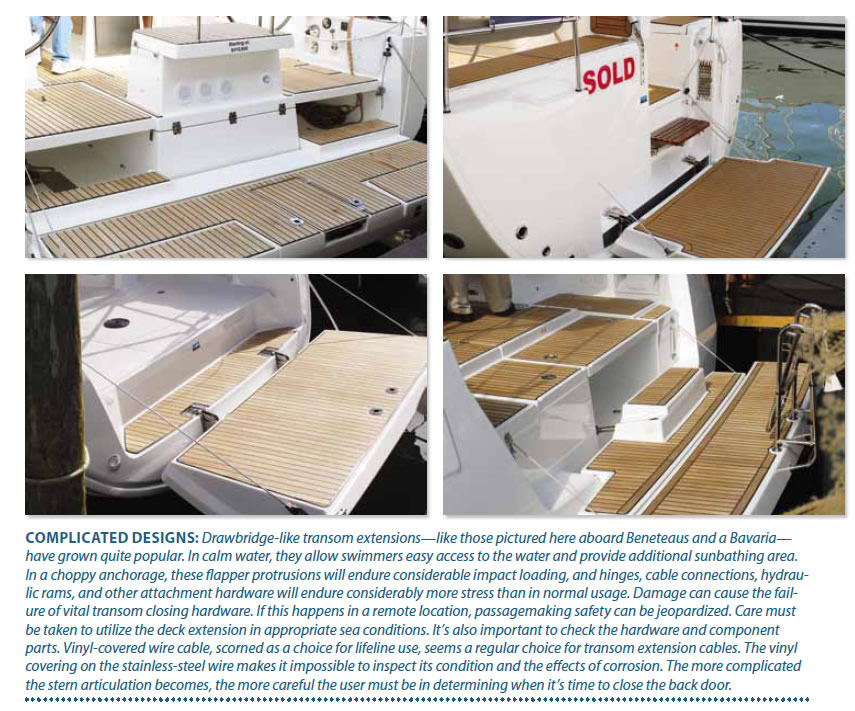
RELATED ARTICLES MORE FROM AUTHOR
Leave a reply cancel reply.
Log in to leave a comment
Latest Videos

Island Packet 370: What You Should Know | Boat Review


How To Make Starlink Better On Your Boat | Interview

Catalina 380: What You Should Know | Boat Review
- Privacy Policy
- Do Not Sell My Personal Information
- Online Account Activation
- Privacy Manager
Sail Types: A Comprehensive Guide to 8 Types of Sails
Sailboats come in all shapes and sizes. And that means there are many types of sails on the market! For those who might not know, sails are made of canvas and use wind power to propel sailboats through the water.
Understandably, different sails are required for different types of sailboats . And sailboats are categorized by the number of hulls they have. Monohulls have a single-hull design, catamarans have two hulls, and trimarans have three. Generally, sailors use catamarans for upwind sailing (but they can be used to sail downwind in certain conditions).
The type of sail you'll need for your sailboat depends on the kind of sailboat you have. Additionally, sails are highly dependent on the wind and weather conditions. Therefore, it's always a good idea to have different types of sails on board to navigate the ever-changing weather conditions.
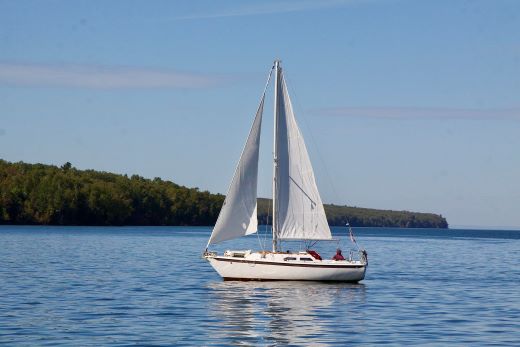
8 Types of Sails for Sailboats
As mentioned, you should carry multiple sails when sailing to prepare for various weather conditions. Here's a brief overview of the types of sails for sailboats:
1. Mainsails
The mainsail is the largest and most important sail. Therefore, it's probably the first sail to come to mind when you think of camping. Typically, it's situated directly behind the mast — connected to the boom — and uses wind energy to move the vessel. The mainsail plays a significant role in tacking and gybing, making it essential for any voyage.
Since the mainsail is a larger sail, it doesn't require wind to propel it forward. And the fact that it can be moved by moving the boom makes it uber-easy to operate.
Learn More About Sailing
2. Headsail
The headsail often accompanies the mainsail, though it is smaller in size. Regardless of your sailboat type, the headsail is positioned at the front of the mast – over the sailboat's bow.
Because headsails are small, they are helpful when navigating through windy conditions. Smaller sails catch less wind, preventing them from propelling your boat as strongly as larger sails. Additionally, headsails help lift, balance, and protect the vessel from inclement weather conditions.
While the term 'headsail' refers to any sail in front of the mast, the jib is the most common type of headsail. (And when a jib is so large that it overlaps the mast, it's called a genoa.)
Learn More About Sailboats
3. Genoa
The genoa is a large sail that attaches to the front of the forestay. (In this instance, it's similar to a headsail.) However, the genoa is larger than the headsail and overlaps the mainsail partially or completely to help the boat go faster.
Genoa sails are useful when sailing through light or medium wind. You can also use it when the wind comes directly from the rear. If you use a Genoa sail during high winds, you'll probably start sailing too quickly and put yourself and your boat at risk.
4. Spinnaker
The spinnaker is a large and whimsical (often colorful) sail. Spinnaker sails are usually symmetrical, allowing them to reach different points of sail. Generally, these are lighter sails and don't cover the mast like the genoa.
Because spinnaker sails are on the larger side, you have to be incredibly careful with them. Don't use them in rough conditions. Instead, save them for sailing in low winds and calm seas.
5. Gennaker
As the name suggests, the Gennaker sail combines a spinnaker and a Genoa sail. They are as large as the spinnaker, although they're not symmetrical.
They come in handy whenever the wind changes from a pure dead run to a reaching point of sail, as sailors can navigate various wind types with the same sail. It's still only meant for lighter and milder winds, but it's more versatile than the spinnaker and genoa.
6. Light Air Sails
Light air sails are useful in calmer conditions when the headsail and mainsail alone aren't cutting it. They include:
- Code Zero : A code zero sail is a gennaker sail ideal for sailing in light to mild winds. It's designed to create lift and boost boat speed whenever regular sails don't generate enough power. For that reason, many racers and cruisers use code zero sails to improve performance and gain control in various situations.
- Windseeker : This small, special sail is reserved for no wind or light wind. Essentially, it helps boats remain maneuverable in extremely calm conditions. And for that reason, it's valuable to long-distance sailors.
7. Storm Jib
Storm jibs can be used as a headsail whenever the weather is particularly rough and windy. Because it functions as a safety seal, it prevents boats from capsizing by reducing the sail area exposed to the wind. Therefore, it's a necessary sail for every sailor.
Read Next: Boating in Inclement Weather
During strong winds and storms, sailors can raise a trysail — a small, triangular sail near the boat's stern — for better control and stability. Generally, sailors do this whenever the mainsail becomes too large and challenging to maneuver.
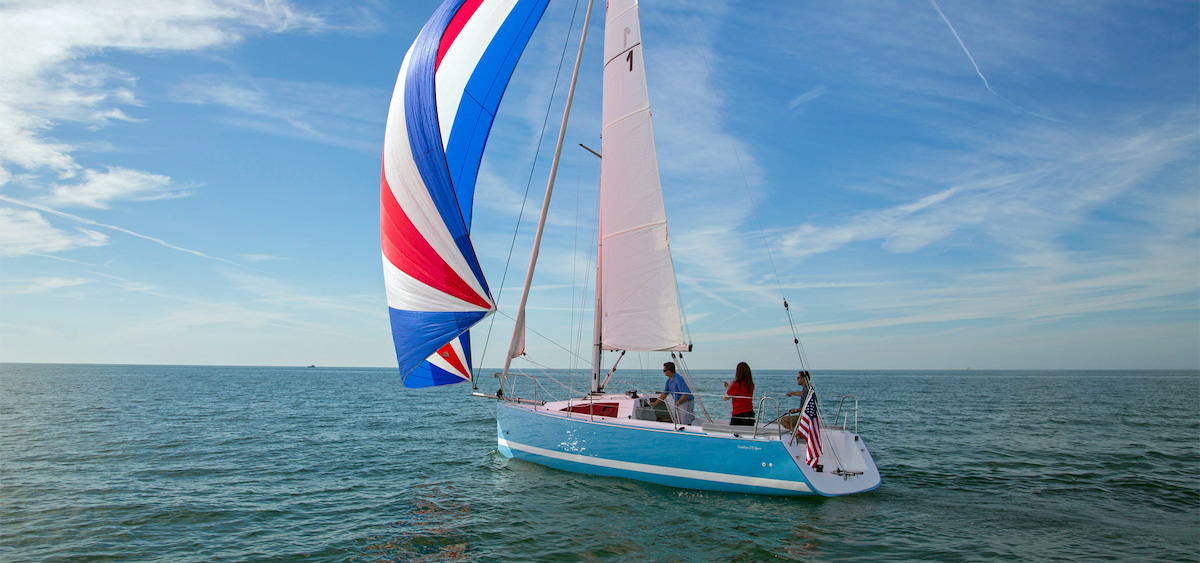
Join Our Newsletter!
Get community news, buying bargains, and how-to guides at your fingertips.

What Is Bow Of A Sailboat?
Hello sailing enthusiasts! I’m here to talk about one of the most important components of any sailboat: the bow. The bow of a sailboat is the front part of the boat, and it serves a variety of purposes.
In this article, I’ll discuss what the bow is, the different parts of the bow, and the importance of the bow in sailing.
I’ll also discuss how to care for and maintain the bow of your sailboat. So if you’re interested in learning more about the bow of a sailboat, keep reading!
Bow Of A Ship – What Is It and Different Types
Knowing what a bow of a sailboat is, it is important to understand the different types of bows and how they can affect the performance of a sailboat.
The traditional bow of a sailboat is known as the clipper bow. This bow is characterized by its pointed profile, which is designed to provide a smooth ride in rough seas.
The clipper bow is also designed to cut through the wind, creating less drag and allowing for faster sailing speeds.
In addition to the clipper bow, there are other bow types used in sailboats. These include the canoe stern, which is designed to provide more stability in choppy waters. It also has a rounded bottom and is often used in racing sailboats.
The catamaran bow is another popular bow type used in sailboats. It is characterized by its two parallel hulls, which provide more stability and greater speed. The catamaran bow is often seen in larger sailboats, such as cruising and racing boats.
Finally, there is the fin keel. This bow type is designed to provide greater tracking stability and reduce drag. The fin keel is often used in smaller sailboats and is considered to be a more efficient design.
No matter which type of bow a sailboat has, it is important to understand how it affects the performance of the boat. Knowing the different types of bows can help sailors make the best decision when choosing a sailboat.
Functional Aspects of the Bow on a Vessel
As an experienced sailor, I know the importance of the bow of a sailboat. Not only does it provide a visually attractive element to the vessel, but it also has several functional aspects.
One of the primary functions of the bow is to provide stability and control to the vessel. The bow helps to reduce the amount of wave energy entering the hull, which can reduce rolling and pitching of the boat. This is especially important in high-wind conditions as it can help to keep the vessel on its intended course.
In addition to providing stability and control, the bow also helps to protect the hull from damage. This is especially important when encountering obstacles in the water such as rocks, logs, and other debris. The bow can help to deflect these objects away from the hull, reducing the risk of damage.
Finally, the bow is an important part of the sailing experience. This is because it is typically the most visible part of the vessel, providing an attractive, yet functional, element to the vessel.
Whether you are a recreational sailor, a competitive racer, or a professional captain, the bow is an important piece of the puzzle and can help to make your sailing experience even more enjoyable.
Bow Design and Types
Bulbous bow.
The bulbous bow is a unique type of bow design that is commonly used on modern-day ships. This bow design is characterized by its rounded or bulbous shape.
This shape helps to reduce the amount of water resistance by creating a smoother transition from the hull of the ship to the bow.
This design also helps to reduce the noise and vibration that is created when the ship is in motion. This design is used on ships of all sizes, from large cargo vessels to smaller pleasure craft.
The bulbous bow also works to increase the speed of the vessel. This can be especially helpful for racing vessels. The bulbous bow is an effective and efficient design that is used often in modern-day sailing.
Parabolic Bow
As a sailor, one of the most important factors to be aware of when it comes to bow design is the shape of the bow. While there are various shapes that can be used, one of the most popular is the parabolic bow.
The parabolic bow is a design that is characterized by its curved shape. This curved shape helps to reduce drag and provides a more efficient sailing experience. It also helps to reduce the amount of water spray that is created when sailing in higher speeds.
The main advantage of the parabolic bow is that it is a versatile design that can be used in a variety of conditions. It is especially effective in light winds and can be used in both upwind and downwind sailing.
The parabolic bow is also a popular choice for racing sailboats due to its ability to provide a smooth, efficient ride. Additionally, it is a great choice for those looking for a boat that is easy to handle and maneuver.
Overall, the parabolic bow is an excellent choice for those looking for a versatile and efficient design that can be used in a variety of conditions.
With its ability to reduce drag and provide a smooth, efficient ride, it is no wonder that this design is so popular amongst sailors.
Cylindrical Bow
The cylindrical bow design is a popular choice for sailing vessels due to its sleek, modern look and its improved performance in light winds.
This type of bow is characterized by a curved, tapered shape that gives the boat a slim profile, allowing it to cut through the water with minimal drag.
This bow type is also highly efficient in light winds, as the curved shape reduces wind resistance, allowing the boat to move faster and more efficiently.
Additionally, the curved shape helps to reduce pitching and rolling motion, which can be uncomfortable for passengers.
Cylindrical bows are typically found on modern sailboats, with the most common type being a fin keel. This type of keel provides additional stability and helps to reduce drag, allowing the boat to sail more efficiently.
Cylindrical bows are also popular for racing boats, as the curved shape helps to reduce drag and increase performance.
Overall, the cylindrical bow is a great choice for sailors looking for a sleek, modern look and improved performance in light winds.
With its curved shape, the cylindrical bow is also able to reduce pitching and rolling motion, making it a comfortable choice for passengers.
As the name implies, a raked bow is one that is angled back in relation to the hull. This is a popular design feature on modern racing sailboats because it helps to reduce drag and improve boat speed.
Raked bows also provide increased visibility when you are sailing, as they are typically taller than other designs. This can be especially helpful when looking for navigation markers or other sailboats on the horizon.
In addition to the performance and visibility advantages, a raked bow also adds aesthetically pleasing lines to the boat’s profile. This is why you will often see raked bows on cruising boats as well as racing boats.
Overall, the raked bow is a great option for any sailing enthusiast who wants to get the most out of their boat. It provides performance, visibility, and a sleek look, making it a great choice for any sailor.
One of the more recent innovations in bow design is the axe bow. First developed in the early 2000s by Australia’s Hobie Cat Company, the axe bow is a radical design that has taken off in the sailing world. The bow is designed to cut through the water with minimal drag, allowing for greater speed and maneuverability.
The axe bow features a wide, shallow V-shaped bow that is designed to create a low-pressure zone in front of the boat, which reduces its drag in the water.
This design also allows the bow to cut through waves more easily, providing a smoother ride and better handling. The wide profile also helps to stabilize the boat and reduce pitching in rough seas.
The axe bow has become hugely popular among sailors, particularly those who race, and is now used on a variety of boats ranging from dinghies to large keelboats.
Its advantages have been proven in a range of different conditions, making it a great choice for sailors looking for a fast, maneuverable boat.
The Inverted Bow
The inverted bow is an innovative design that has been gaining traction in sailing circles in recent years. It features a unique inverted shape that maximizes the boat’s waterline length and creates a sleek, hydrodynamic design.
Compared to more traditional bow designs, the inverted bow is designed to reduce drag, allowing the boat to move through the water more efficiently.
This design is ideal for boats that need to move quickly and efficiently, such as racing boats or boats designed for long-distance cruising. It also provides a smoother ride in choppy waters, which is especially important for offshore sailing.
The inverted bow’s design is more complex than traditional bows, which makes it more difficult to build and maintain.
However, the added effort is often worthwhile, as the inverted bow can significantly improve the performance of a boat in certain conditions.
Why Is It Called The Bow Of A Boat?
The term “bow” comes from the nautical language, where it is used to refer to the front of the boat, or the “pointy end.” It is believed that the term originated in the Middle English word “bowe,” which means “forepart.”

The term is also used to describe the forward part of a ship’s hull, which was traditionally curved like the bow of an arrow. This curve allowed for greater speed through the water and less resistance from the waves.
The bow of a boat is the most important part of a sailboat, as it is the point of contact with the water and is responsible for the boat’s stability and performance.
As such, it is essential for a sailor to be familiar with the bow of their boat and the importance of its placement in the water.
Why Is It Called Bow And Stern?
The terms bow and stern have been used to describe the front and back of a sailboat since the early days of sailing. The bow is the front of the boat, and the stern is the back.
The words come from the Old English word “boga,” which means bow or bowman. The front of the boat is like a bowman, drawing an arrow to the target, while the back of the boat is like a stern man, keeping the boat on course.
This metaphor has been used for centuries, and the terms are still in use today. It’s a reminder of the importance of having a good navigator on board to ensure a safe and successful journey.
What Are The Three Types Of Bow?
Sailboat bows come in several shapes and varieties, each with its own unique benefits and disadvantages. It’s important to know the differences between the three main types of bow when shopping for a new sailboat.
The first type is the Round Bow. These bows are very common, with a smooth and rounded shape that helps the boat cut through waves and swell.
A round bow is great for sailboats that will be used in rougher waters, as it helps to reduce drag and keep the ride comfortable.
The second type of bow is the Clipper Bow. Clipper bows are often seen on classic style sailboats, which have a sharp and pointed design. This bow shape helps the boat slice through the water with ease, making it perfect for racing boats.
The final type of bow is the Canoe Bow. These bows are wide and flat, with a shallow draft. This makes them ideal for sailboats that will be spending a lot of time in shallow waters. Canoe bows also offer more stability, as they help to keep the boat upright in choppy waters.
Each of these bow types has its benefits and drawbacks, so it’s important to consider your sailing style and needs before making a decision.
Knowing the differences between the three types of bow can help you find the perfect sailboat for your needs.
What Are Parts Of A Sailboat Called?
In order to understand what the bow of a sailboat is, it’s important to know the parts of a sailboat and what they’re called.
These parts include the mast, which is the vertical pole that the sails are attached to; the boom, which is the horizontal pole that runs along the bottom of the sails; the jib, which is a triangular sail located at the front of the boat;
the mainsail, which is the large, triangular sail that is located at the back of the boat; the tiller, which is the arm that is used to steer the boat; the rudder, which is the flat piece of metal that is attached to the back of the boat and is used to steer it;
and the hull, which is the body of the boat. Knowing the parts of a sailboat and what they are called can help you understand what the bow of a sailboat is and how it is used.
The Role of Bow
The bow of a sailboat is much more than just the front of the boat. It is a vital part of the sailing experience, and plays a crucial role in the performance of the boat.
The bow is responsible for cutting through the water, with its shape determining how efficiently the boat moves through the water.
Its shape also affects the lift generated by the sails and the stability of the boat. Knowing how the bow affects the sailing experience is key to getting the most out of the boat.
The bow also plays a role in the safety of the boat. Its shape affects the buoyancy of the boat, and its ability to remain afloat even in rough seas.
It is important that the bow is designed with safety in mind, as any structural weakness can cause the boat to become unstable and capsize.
Finally, the bow of the boat can impact its aesthetic appeal. The design of the bow can make a huge difference in the overall appearance of the boat, and can help to make it stand out from the rest.
Whether its performance, safety, or aesthetics, the bow of a sailboat plays an essential role in its sailing experience. Understanding how the bow affects the boat can help to maximize its performance and safety, and make it look great too.
Conclusion On What Is Bow Of A Sailboat
As we have seen, the bow of a sailboat is a critical component of the vessel’s overall design and performance. It is the front of the boat and is often the first thing the eye will see when looking at a sailboat.
It is important to understand the shape, design, and size of the bow in order to properly equip the boat and maximize its performance.
I hope that this article has helped you understand the importance of a sailboat’s bow. As Gary Jobson, a renowned sailor and sailing author, I encourage you to always pay attention to the shape, design, and size of the bow when preparing to sail.
With the right knowledge and preparation, you can maximize your sailing performance and have an enjoyable time on the water.
Similar Posts

How To Clean Non Slip Boat Deck
Are you the proud owner of a non-slip boat deck? If so, congratulations! You are part of a select group of sailors who have chosen to make their boat safe and comfortable for everyone on board. But what do you do when it comes time to clean your non-slip boat deck? Don’t worry, we have…
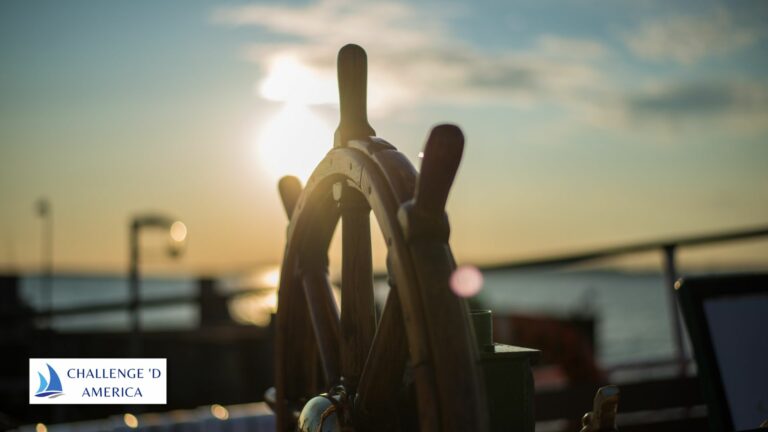
Rudder Types For Sailboats
As a sailor, you know that the type of rudder on your boat can have a big impact on its performance. There are several different types of rudders available for sailboats, each with its own advantages and disadvantages. In this article, we’ll take a look at some of the most popular rudder types and see…

How Do You Secure A Dinghy To A Sailboat?
Ahoy there, Sailors! As a seasoned sailing expert, I’m here to help you learn the ropes on the best way to secure a dinghy to a sailboat. It’s important to have a secure connection between the two vessels, as you don’t want a rogue wave to send your dinghy away while you’re out on the…

What Size Sailboat Is Best For Coastal Cruising?
Sailors who are looking for the best size sailboat for coastal cruising should consider the benefits of a 30-foot boat, which is perfect for cruising bays and other relatively sheltered areas along the coast. Although size isn’t the only thing that matters when it comes to sailing offshore, a boat of this size is generally…
![sailing-rigging-sailboat-time-take How Long Does It Take To Rig A Sailboat?[Editing Required]](https://challengedamerica.org/wp-content/uploads/2023/02/sailing-rigging-sailboat-time-take-768x432.jpg)
How Long Does It Take To Rig A Sailboat?[Editing Required]
Rigging a sailboat requires knowledge, experience and the right equipment, but how long does it actually take? This article will provide an overview of the process of rigging a sailboat, outlining the steps involved, factors that affect the time taken, and tips on how to reduce the time spent on this task. Read on to…

What Is a Headstay On a Sailboat?
A headstay, also known as forestay, is an important part of the standing rigging system on sailboats that connects the mast to the bow or front of the boat and prevents it from falling back or aft (towards the stern). Depending on your boat, you can choose between a full-length headstay or a fractional rig…
Leave a Reply Cancel reply
Your email address will not be published. Required fields are marked *
Save my name, email, and website in this browser for the next time I comment.
The Various Types of Sailboats and Rigs
Aditya Adjie / EyeEm / Getty Images
The Modern Sloop
The most common type of small-to-midsize sailboat is the sloop. The rig is one mast and two sails. The mainsail is a tall, triangular sail mounted to the mast at its leading edge, with the foot of the sail along the boom, which extends aft from the mast. The sail in front called the jib or sometimes the headsail, mounts on the forestay between the bow and the masthead, with its trailing corner controlled by the jib sheet.
The Bermuda or Marconi Rig
These tall triangular sails are called the Bermuda rig, or sometimes the Marconi rig, named for their development more than two centuries ago in Bermudan boats. Because of the physics of how force is generated by wind blowing past a sail, tall thin sails generally have more power when the boat is sailing into the wind.
Racing Sloop
Gail Oskin / Getty Images
Here is another example of a sloop with a Bermuda rig. This is PUMA Ocean Racing's il Mostro, one of the fastest monohull sailboats in the world, in the 2008/2009 Volvo Ocean Race. The sails are much bigger than found on most cruising sailboats, but the general rig is the same. In both of the sloops shown so far, the jib reaches to the top of the masthead. These are sometimes called masthead sloops.
Fractional Sloop Rig
Ahunt [CC0] / Wikimedia Commons
Here, notice a small racing dinghy with a sloop rig. This is still a Bermuda rig, but the mainsail is proportionally larger and the jib smaller, for ease of handling and maximum power. Note that the top of the jib rises only a fraction of the distance to the masthead. Such a rig is called a fractional sloop.
KenWiedemann / Getty Images
While a sloop always has two sails, a cat-rigged boat generally has only one. The mast is positioned very far forward, almost at the bow, making room for a very long-footed mainsail. The mainsail of a cat rig may have a traditional boom or, as in this boat, a loose-footed mainsail attached at the aft corner to what is called a wishbone boom.
Compared to Bermuda Rigs
A primary advantage of a cat rig is the ease of sail handling, such as not having to deal with jib sheets when tacking. Generally, a cat rig is not considered as powerful as a Bermuda rig, however, and is more rarely used in modern boats.
Cat-Rigged Racing Dinghy
technotr / Getty Images
In this photo, there is another cat rig, which works well on small racing dinghies like this Laser. With a small boat and one sailor, a cat rig has the advantages of being simple to trim and very maneuverable when racing.
John White Photos / Getty Images
A popular rig for midsize cruising boats is the ketch, which is like a sloop with a second, smaller mast set aft called the mizzenmast. The mizzen sail functions much like a second mainsail. A ketch carries about the same total square footage of sail area as a sloop of the equivalent size.
Make Sail Handling Easy
The primary advantages of a ketch are that each of the sails is usually somewhat smaller than on a sloop of equivalent size, making sail handling easier. Smaller sails are lighter, easier to hoist and trim and smaller to stow. Having three sails also allows for more flexible sail combinations. For example, with the wind at an intensity that a sloop might have to double-reef the main to reduce sail area, a ketch may sail very well under just jib and mizzen. This is popularly called sailing under “jib and jigger”—the jigger being an old square-rigger term for the aft-most mast flying a triangular sail.
While a ketch offers these advantages to cruisers, they may also be more expensive because of the added mast and sail. The sloop rig is also considered faster and is therefore used almost exclusively in racing sailboats.
Public Domain
A yawl is very similar to a ketch. The mizzenmast is usually smaller and sets farther aft, behind the rudder post, while in a ketch the mizzenmast is forward of the rudder post. Aside from this technical difference, the yawl and ketch rigs are similar and have similar advantages and disadvantages.
Tomás Fano [ CC BY-SA 2.0 ], via Wikimedia Commons
A typical schooner has two masts, and sometimes more, but the masts are positioned more forward in the boat. Unlike in a ketch or yawl, the forward mast is smaller than the aft mast (or sometimes the same size). One or more jibs may fly forward of the foremast.
Traditional Schooners
While some modern schooners may use triangular, Bermuda-like sails on one or both masts, traditional schooners like the one shown here have gaff-rigged sails. At the top of the sail is a short spar called the gaff, which allows the sail to extend back along a fourth side, gaining size over a triangular sail of the same height.
Gaff-rigged schooners are still seen in many areas and are well loved for their historic appearance and sweeping lines, but they are seldom used anymore for private cruising. The gaff rig is not as efficient as the Bermuda rig, and the rig is more complicated and requires more crew for sail handling.
Schooner With Topsail and Flying Jibs
Print Collector / Getty Images
Above is another gaff-rigged schooner that is using a topsail and several flying jibs. Tacking or gybing a complicated sail plan like this takes a lot of crew and expertise.
Square-Rigged Tall Ship
Bettmann / Getty Images
In this illustration, notice a large three-masted square-rigger flying five tiers of square sails, several headsails, and a mizzen sail. Although this is a modern ship, one of many still used around the world for sail training and passenger cruise ships, the rig is essentially unchanged from centuries ago. Columbus, Magellan, and the other early sea explorers sailed in square-riggers.
Generating Power
Remarkably efficient sailing downwind or well off the wind, square sails do not generate power from their leading edge as in the Bermuda rig, which has become predominant in modern times. Thus, square-riggers generally do not sail upwind. It was due to this limitation that the great trade wind sailing routes around the world were developed centuries ago.
Learn the Parts of a Sailboat and How to Communicate Them
Heavy Weather Sailing
Buying a Sailboat: Sloop vs. Ketch
West Wight Potter 19 Sailboat Review
Learn How to Sail a Small Sailboat
Review of the O'Day Mariner 19 Sailboat
How to Rig Your Small Sailboat and Prepare to Sail
The 9 Best Recreational Kayaks
Tall Ships in Los Angeles and Southern California
The 4 Best Bass Boats
The 10 Best Kites
The 10 Best Women’s Sailing Shoes
The 12 Best Inflatable Stand-Up Paddleboards of 2024, Tested and Reviewed
The 11 Best Two-Person Tents of 2024, Tested and Reviewed
How to Choose the Best Cabin on a Cruise Ship
Owner's Review of the MacGregor 26 Sailboat Models
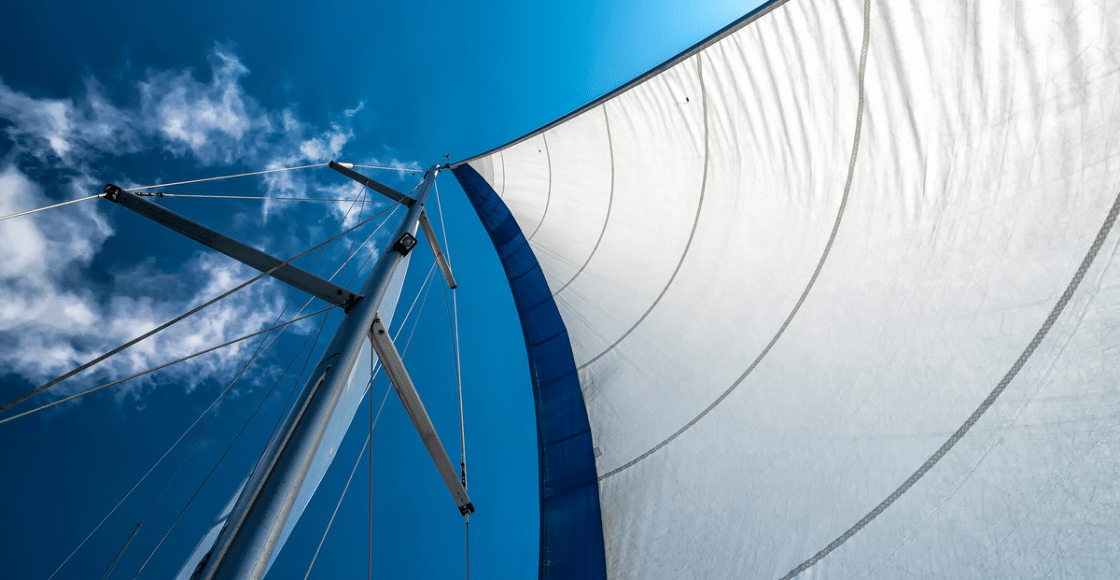
Type Of Sails: A Complete Guide

Table of Contents
If you are approaching sailing and sailboats from a very beginner’s perspective , then the concept of different kinds of sails can be a strange one. We often believe we see one kind of sailboat with one kind of sail, and our simple minds lead us to believe you are only meant to move them around, and you will get to where you need to go.
However, you would not have landed on this article if you did not suspect that there was more to sails and sailboats. So here, you can have a kind of in-depth, kind of summarized review of the different kinds of sails and the most popular sail and mast configurations out there.
It is also important to understand why there are so many different kinds of sails. When you are out on the water, different weather conditions can occur. Your sail acts as a motor of some sort, moving your sailboat forwards, but your sail is also highly dependent on the wind conditions around it. This is why having different kinds of sails can help you navigate your weather conditions and turn them to your own advantage while sailing.
Different sails also come with different danger levels in case of strong wind, so knowing what kinds you might need to watch out for is also extremely important. So, without further ado, let us get into it.
You may have heard of this one before or seen it portrayed in movies and TV shows. As the name suggests, the mainsail is the most popular kind of sail on any sailboat, and they are found behind the mast. They are also attached to the boom. Because they take up so much space on your sailboat, they are also one of the most important sails to take care of and keep an eye on.
Since the mainsail is such a large sail, it does not require too strong a wind to propel it forward , as its large surface area will easily catch a breeze. At the same time, the fact that it can be moved around by moving the boom makes it, so it is easy to steer. This makes it so that the mainsail is the most important sail on your sailboat.
Headsail/Jib
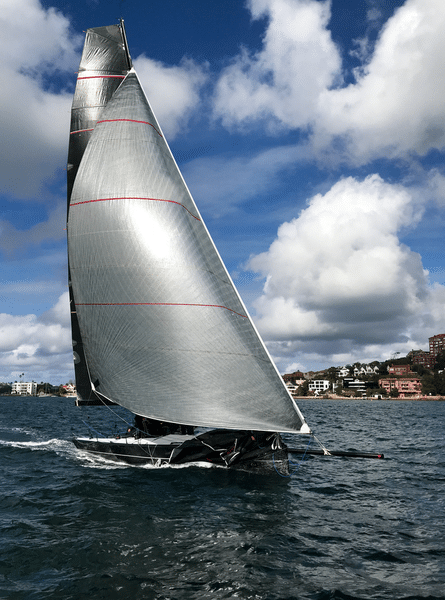
The headsail, or the jib, is likely the second most popular kind of sail found on sailboats. This is because it often accompanies the mainsail, the most popular kind. On all sailboats , the headsail is put at the front of the mast over the sailboat’s bow . It is always a smaller sail than the mainsail.
The fact that the headsail is smaller can be especially useful if you are caught in strong winds. In this situation, you likely do not want to use your mainsail (or trim it as much as possible) to move slower and not be thrown around by the winds. Smaller sails catch less wind, meaning they do not propel your boat as strongly as larger sails.
Having a good headsail can be an incredible safety measure, especially if the seas you are trying to sail are known to be wild and unpredictable.
You may have seen a genoa sail before if you have been around boats or have ever lived in a coastal town. This kind of sail is a large sail that you can attach to the front of the forestay (similarly to the headsail). This is a larger sail than the headsail and can even cover the mainsail either partially or completely. For this reason, the genoa also used to be called an “overlapping jib.”
You should use a genoa if you are sailing through either light or medium winds and if your sailboat is at a dead run point of sail (this means that the wind is coming directly from the rear. If you attempt to use a genoa sail in stronger winds , you might start going too fast and put yourself and your boat at risk since it is such a large sail. So, it is important to be careful .
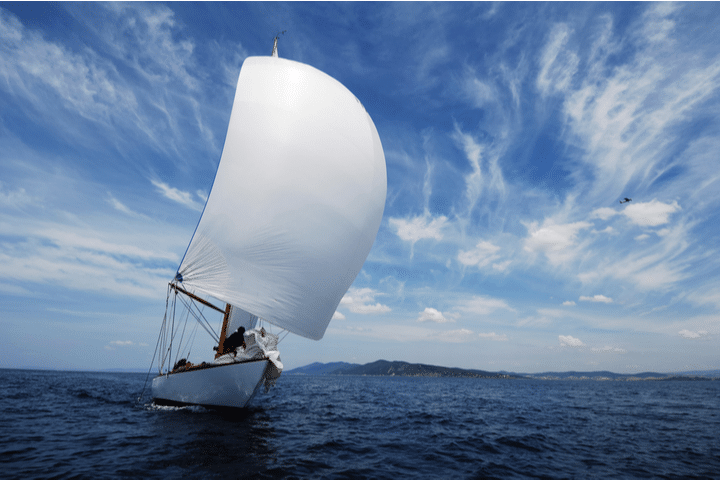
The spinnaker is the most whimsical kind of sail since it is a large and colorful kind. They are also often symmetrical, which means they are more appropriate for reaching different points of sail, such as the running point of sail. They are lighter sails, and they do not cover the mast as the genoa sail does. You do not attach a spinnaker to the forestay and instead let it stretch out past the boat’s bow.
The large surface area of the spinnaker means that you have to be even more careful than with others on the kind of conditions you choose to use this sail in. If the winds are too strong, you could be putting yourself and your passengers at serious risk using this sail, so you should choose to use it only at times when the wind is low or in seas that are known for their low winds and tranquility.
As the name suggests, the gennaker sail mixes the genoa sail and the spinnaker sail. These kinds of sails are more recent inventions. They are as large as the spinnaker sail, but they are not symmetrical. Unlike the genoa or the headsail, they are also not meant to be attached to the forestay, like the spinnaker sail.
The usefulness of this sail is that if the winds change from a pure dead run to a reaching point of sail, then sailors do not have to resort to using a spinnaker from a genoa, instead of being able to take advantage of different winds while still using the same sail as they were before. This kind of sail is still only meant for lighter and milder winds , but there is more flexibility with the gennaker than the genoa and the spinnaker sails.
Popular Sail and Mast Configurations
There are many different ways to place the sails we have learned about in the above section. We have compiled a list of some of the most popular ones so you can understand how these sails can be used to make a sailboat move through the oceans.
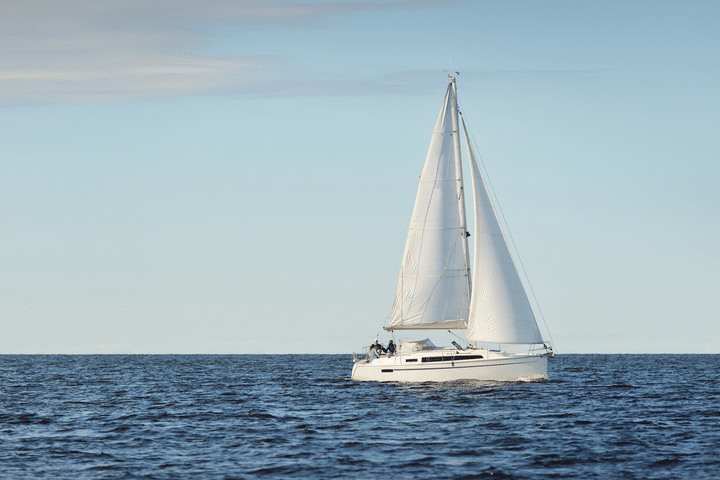
A sloop is by far the most popular configuration. It features a single mast, double sail (the mainsail and the headsail), and mast configuration. The headsail is located from the forestay on the mast to the top of it. The type of headsail used can also vary from a genoa, a spinnaker, or a gennaker sail.
Fractional Rig Sloop
A fractional rig sloop also features a single mast with a double sail setup similar to a sloop. However, what makes the fractional rig sloop different is that the forestay does not reach the top of the mast. This means the headsail is constricted to a smaller amount of surface than on a regular sloop, making it so that your sailboat captures less wind and moves slower .
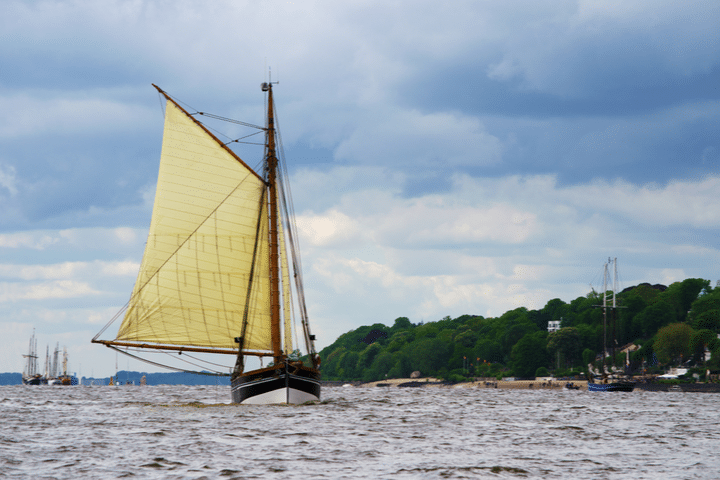
Cutters are interesting because they’re like a sloop but with a second forestay. This can be useful because it allows them to carry two headsails (a mainsail and one of the jibs). Cutters are good for cruising because they offer a range of wind options, giving you more time to get from place to place.
This is a less common mast configuration than previous others on this list. This is because a ketch features two masts. There is a larger mast fit for the mainsail and the headsail and a smaller mast between the mainmast and the stern (the rear) of the boat. This kind of mast configuration is more commonly found among Northern European freighters or fishing boats. This mast configuration is also called the mizzen mast.
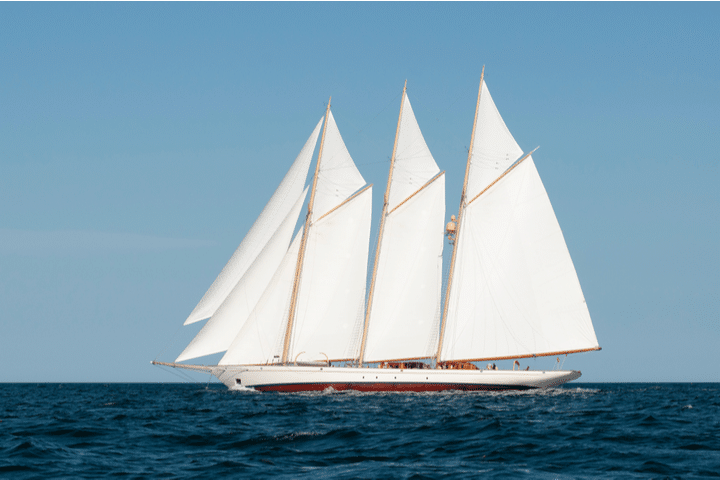
A schooner mast configuration features two or more masts. This is similar to the previous configuration, the ketch. It also features multiple sails. While a ketch’s aft mast (also known as the rear mast) is higher than the forward mast, a schooner’s aft mast is shorter than the forward mast. A schooner can also have up to six masts (although two are the most common). These are the main differences between the two.
This one is quite similar to a ketch mast configuration (mentioned above). The only real difference between them is that the mizzen mast is put directly behind the sailboat’s rudder post in a yawl.
A cat sail will have one mast and one sail. The mast is put at the bow of the sailboat. This kind of mast configuration is often found on smaller boats, more specifically on dingy boats. Boats with the cat mast configuration are also often called catboats.
Final Verdict
Having the appropriate kind of sail on your sailboat is incredibly important. At the same time, being aware of the kinds of sails that there are and the kind of sail and mast configuration can make you into a more well-rounded and informed sailor. With that in mind, we hope that you leave this article feeling more confident in your skills when you are out at sea.

Boatsetter empowers people to explore with confidence by showing them a world of possibility on the water. Rent a boat, list your boat, or become a Boatsetter captain today.
Browse by experience

Explore articles
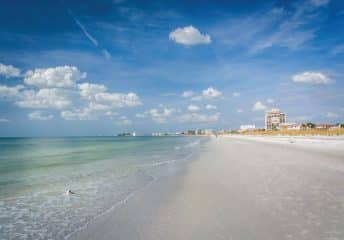
Top 6 Florida Gulf Coast Beaches
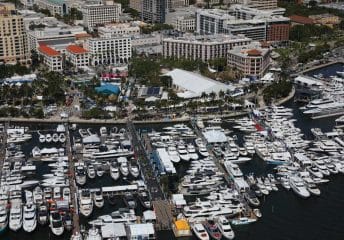
2023 Palm Beach Boat Show Guide
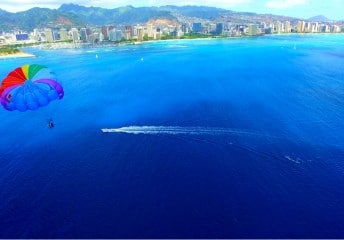
Top Adventures to Try While Vacationing in Oahu, Hawaii
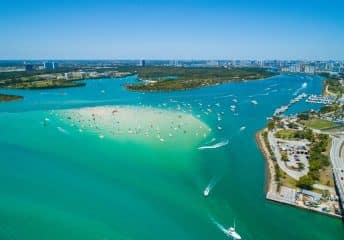
Haulover Sandbar Boating Guide
No products in the cart.
Sailing Ellidah is supported by our readers. Buying through our links may earn us an affiliate commission at no extra cost to you.
The Most Popular Types Of Sails On A Sailboat
A sloop-rigged sailboat typically features a mainsail, a headsail, and an additional light-wind sail, such as a spinnaker or Gennaker. The mainsail is rigged aft of the mast, while the headsail is attached to the forestay. The two most commonly used headsails are the Genoa and Jib.
The sails are vital parts of a sailboat since you obviously couldn’t sail without them! There are many different sails depending on the type of sailboat and its rig configuration, and we’ll walk through them together in this article.
The different types of sails on a sailboat
We can divide the selection of sails on a sailboat into three categories:
- Standard sails
Light-wind sails
- Storm sails
Each category serves different purposes depending on the vessel’s rig configuration and the sail’s functionality.
The standard sails
The standard sails usually form a sailboat’s basic sail plan and include :
- The Mainsail
- The Staysail
- The Mizzen sail
These sails are the ones that are used most frequently on sloop, ketch, and cutter-rigged sailboats and are usually set up to be ready to use quickly.
Headsails are often rolled up on a furler, while the main and mizzen sail are stored on the boom or furled into the mast.
The halyards and sheets are kept within easy reach, making these sails the primary choice in most situations. Let’s dive further into each of them.
The mainsail is a triangular sail that flies behind the mast on top of the boom . Although it may not always be the largest sail on the vessel, we commonly refer to it as “the main.”
It is a vital sail, and keeping the sail shape trimmed properly on every point of sail is crucial for the stability and performance of the boat.
A Jib sail is a headsail that does not overlap the mainsail. It is typically between 100% and 115% of the foretriangle but can also be smaller. The foretriangle is the triangular area formed by the mast, deck, and forestay. The Jib is often used with a self-tacking system involving a sheet traveler in front of the mast.
This sail is often seen on newer boats with fractional rigs, which typically have a larger mainsail area than the headsail area. However, the Jib is versatile and also used in other configurations.
People often mix the terms Genoa and Jib. Many refer to any headsail as a Jib, which is incorrect. I personally prefer to use the correct terms to avoid confusion .
A Genoa sail resembles a large Jib but extends past the mast and overlaps the mainsail. Genoas are usually larger than 115% of the foretriangle , with sizes ranging from 120% to 150%. They are often used on vessels with masthead rigs and smaller mainsails but are also common on fractional rigs.
The Staysail is typically found on cutter rigs and is set on the inner forestay or cutter stay. It can be combined with other sails, such as a Jib, Genoa, or Yankee, or on its own in stronger winds.
The Staysail is also useful when sailing downwind, as it can be paired with a headsail and extended to opposite sides of the boat using a pole.
The Yankee sail resembles a Genoa and Jib but has a high-cut clew. This shape allows for improved airflow when used with another headsail. The Yankee is often used on cutter-rigged boats in combination with a staysail and is known for its versatility in different wind conditions.
Mizzen Sail
A mizzen sail is similar to the mainsail, only smaller . It is set on the aft mast of a boat with multiple masts, such as a ketch rig. The mizzen sail is usually used to provide balance and stability to the vessel and provides additional power when sailing downwind.
Another handy usage is to fly the mizzen at anchor to keep the bow up against waves and swell.
The light-wind sails are large, made of thin nylon, and typically shaped like a half-balloon. They are a type of headsails that are great when the winds are too light to fill the standard headsail and are often used when sailing downwind.
The four most commonly used light-wind sails are:
- The Spinnaker
- The Gennaker
- The Code Zero
- The Parasailor
They all provide excellent forward propulsion on a sailboat but usually require some extra rigging to be set.
Experienced cruisers love to use light-wind sails in nice weather, but they have a critical weakness to be aware of. These sails easily get overpowered when the wind increases, and I strongly advise being careful and observant of the wind conditions when flying them.
(Yes, I have managed to rip mine on one occasion due to getting overpowered, but that’s a different story…)
Let’s continue and take a closer look at each of the light wind sails.
A Spinnaker sail is a large, lightweight downwind sail used at deep angles between 120 and 180 degrees. It is symmetrical in shape with two clews and is often brightly colored.
The Spinnaker is set by using a pole to extend the sail’s clew to the vessel’s side. Then, a sheet is attached to the other clew and led back to the stern of the boat.
A Gennaker sail combines the characteristics of the Genoa and Spinnaker. It is made of nylon like the Spinnaker but is asymmetrical like a Genoa and rigged slightly differently. The tack is attached to the bow, and the clew has a sheet led aft to the cockpit. The Gennaker can be equipped with a snuffer to make it even easier to set up and take down.
It is popular among cruisers because it is simpler to use than a spinnaker and it doesn’t require a pole. The sail is effective at angles between 90 degrees and almost all the way down to 180 degrees, making it versatile for various light-wind conditions.
A Parasailor is similar to the Spinnaker in many aspects but has some distinct differences. It has a double-layer wing that inflates as the sail is filled with air, creating a batten-like effect pushing the leech out while providing lift to the bow.
The wing also helps to prevent the rolling movements you get with a Spinnaker and the collapsing of the leech that can occur with a Gennaker at deep angles.
This makes the parasailor effective at sailing angles between 70 and 180 degrees dead downwind. Parasailors can be set like a Gennaker when reaching or with a pole like the Spinnaker for running downwind.
A Code Zero sail combines some elements of the Genoa and Gennaker. Unlike the Gennaker, the Code Zero has a different shape, allowing it to be used while sailing upwind.
Another benefit is that it can be used with a furler which makes it easy to roll in and out. However, it can’t replace the Gennaker or Spinnaker entirely, as it is not effective at sailing angles deeper than 120 degrees.
If you see a big yacht with three forestay’s, the forward one probably holds a code zero sail. A bow spirit allows the ability to fly additional light wind sails as well!
Storm Sails
The storm sails consist of a small Mainsail and Jib in heavy-duty materials designed for rough conditions. These sails enable us to maintain speed and stability in the boat in severe weather too strong for the standard sails.
Storm sails are often brightly colored , such as red, orange, or yellow, to make them more visible at sea.
Storm Mainsail
A storm mainsail is used when the reefing setup doesn’t allow the standard mainsail area to be reduced enough to prevent overpowering. The sail can handle rough conditions and is excellent for maintaining stability.
A storm Jib is used when the headsail has been furled to the point where it is no longer effective. It is especially useful for sailboats rigged with a Genoa, as the Genoa gets inefficient when heavily reefed. As the storm Jib is smaller than the standard headsail, it also lowers the center of gravity, making the vessel heel less and become more stable.
Explaining the terms for the parts of a sail
Let us talk some more about sails. The goal is to go sailing, right?
Identifying the different parts of the sails is crucial to understanding which lines go where.
Let’s zoom in on a sail and break down the terms :
The head is the top corner of the sail . Most mainsails have a headboard or plate where the halyard is connected, while headsails use a metal ring. A halyard is a line we use to raise and lower sails with.
The leech is the aft part of a sail , located between the clew and head. We use a combination of the outhaul, main sheet, and traveler to trim and adjust the leech on the mainsail.
The headsail’s leech is trimmed by adjusting sheet tension and angle according to the wind speed and direction. A traveler is a track with a movable car or pulley system for adjusting the position and angle of a sheet, and most sailboats have one main traveler for the mainsail and car tracks along the side decks for the headsail.
The luff of a sail is the front part of the sail between the tack and head. On a mainsail, the luff runs vertically along the mast and along or close to the forestay on a headsail. Headsails are often equipped with luff foam to help maintain their shape when partially reefed on a furler.
Battens are slats or tubes inserted into pockets on the mainsail to help the sail maintain its shape and increase its lifespan . A traditional sail hoisted and lowered on the boom typically has horizontal battens. Vessels with in-mast furling can use vertical battens instead of horizontal ones.
- A fully battened Mainsail has the battens run through the entire sail length from the luff to the leech.
- A standard battened main sail has the battens along the sail’s leech.
Telltales are small ropes, bands, or flags attached to a sail to give an indication of the airflow around the sail. They help us understand how the wind affects the sail and allow us to fine-tune the trim for optimal performance. Telltales are usually found on the mainsail’s leech and in the front of the headsail’s leech.
The clew of a sail is the lower aft corner and where the outhaul is connected on a mainsail. Headsails have sheets attached to their clew for controlling and trimming the shape and tension.
The tack is the lower, forward corner of a sail. On a traditional Mainsail, the tack is attached to the Gooseneck, a hinge in front of the boom attached to the mast.
With in-mast furling, the tack is connected to the furling mechanism. This mechanism is used to roll the sail into the mast.
The headsails tack is connected to a furler drum on the forestay on most sailboats. Vessels using traditional hank-on headsails connect the tack to a fixed point on the bow.
The foot of the mainsail is the bottom portion of the sail between the clew and the tack. It is trimmed using the outhaul, a line attached to the clew, and used to adjust the tension on the foot of the sail. Some mainsail are configured loose-footed, and others are attach-footed.
The foot of the headsail is trimmed by adjusting the tension and angle of the sheets, which are the lines used to control the headsail’s clew. We use cars, or pulleys, to adjust the angle of the sheets and thus the trim of the headsail.
Traditional and less commonly seen sails
We’ve now looked at the most commonly used sails and walked through the different parts of them. But what about the less common ones? The art of sailing has a rich history, with some unique sail designs that we rarely see today.
Read on if you want to peek into some traditional sails, or skip straight to popular sail and mast configurations here.
Square sails
Square sails are rectangular and usually set across a ship’s mast, mostly seen on traditional square-rigged sailing ships and Viking ships. These sails are efficient for downwind sailing and are hung from horizontal spars called yards. Though not as agile as modern fore-and-aft sails when sailing upwind, they were central to naval exploration for centuries. Today, they’re mainly seen on traditional vessels and tall ships, symbolizing maritime heritage.
If you’ve been to Martinique in the summer, you may also have noticed the round skiff sailboats the local fishermen traditionally used for fishing in the Atlantic Ocean with their distinctive big squared sails. Tour de Martinique des Yoles Rondes is a popular yearly event where the locals race and show off these beautiful old boats with colorful sails!
A gaff sail is a traditional four-sided sail held up by a horizontal spar called the “gaff.” They are used on classic gaff-rigged sailboats and allow for a larger sail area with a shorter mast. Gaff-rigged boats were traditionally popular and usually carried 25% more sail area than the equivalent Bermudan rig, making them fast on a downwind run. The Gaff rig could also carry a topsail between the gaff and the mast.
However, they don’t sail well to windward, and modern designs have shifted towards triangular sails for better upwind performance.
Jib-headed topsail
The Jib-headed topsail is a small triangular sail used on gaff rigs and is set between the gaff and the top of the mast.
A lug sail is an angled, four-sided sail that attaches at a point on its top side, making it hang tilted. The sail is simple to use and often found on smaller or older boats. There are different types, like standing, dipping, and balance lugs, each hanging differently around the mast.
The lug sail evolved from the square sail to improve how close the vessels could sail into the wind. Because of their upwind performance, fishermen used them widely in Europe from the seventeenth through the nineteenth centuries.
Sprit sails
The spritsail, with its unique four-sided design, stands out thanks to a diagonal support called the “sprit.” It was traditionally popular in Thames sailing barges due to its ability to accommodate high-deck cargo. These days, it’s primarily found in smaller boats like the Optimist dinghy in a variant called “leg of mutton spritsail.”
The spritsail was also used in traditional wooden boats like the fearing version of the Oselvar wooden boat traditionally used in western Norway.
It is also commonly used by the indigenous Guna Yala tribes in Panama in their dugout Ulu’s up to this day. We saw plenty of them when we cruised along the coast, and some of them approached us to sell us their delicious catch of the day!
Lateen sails
A lateen sail is a triangular sail set on a long spar angled on the mast. It was originally popular in the Mediterranean and on Arab shows, and its design enhanced maneuverability and played a crucial role in historic sea exploration.
The lateen sail was used on lateen rigs, the predecessor to the Bermuda rig – one of today’s most commonly used rigs!
Which brings us to the following topic:
Popular sail and mast configurations
There are many different rigs and sail configurations between sailing vessels. From the old-school square rigs to schooners, gaff rigs, and more. However, this article will focus on the three most popular rigs seen on modern sailboats:
- The Bermuda Sloop Rig
- The Cutter Rig
- The Ketch Rig
The three rigs have similarities and differences between their sail and mast configurations. We’ll walk through each of them to understand how they utilize their different types of sail.
If you want to learn more about other rigs, take a look here .
Bermuda Sloop Rig
The Bermuda sloop rig is the most common rig on modern vessels. It is characterized by a single mast, a triangular mainsail, and a headsail. This rig is named after the Bermuda Islands, where it was developed in the 17th century.
Some of the key features of the Bermuda sloop rig:
- The mast is typically tall and raked, which allows for a large sail area and excellent stabilit y.
- The mainsail is attached to the mast and boom. It is usually combined with a single headsail at the front of the boat, making it powerful and easy to sail.
- The Sloop is usually equipped with a masthead or fractional rig and flies a Jib or Genoa as its primary headsail.
The Bermuda Sloop rig is known for its simplicity, is often used for racing and cruising, and is popular among sailors worldwide.
The cutter rig is very similar to the sloop rig. The significant difference is that it has a single mast and two headsails – a Staysail and a Yankee. The cutter rig is known for its versatility due to the multiple options in sail plans and the double headsail setup.
Some key aspects that separate the Cutter from the Sloop:
- The rig is often more robust than its Sloop sister because of the additional cutter stay and running backstays.
- The mast is located closer to the center of the boat.
- The Cutter has a staysail on the inner forestay and a Yankee sail on the outer. The sails can be used in combination with each other or independently.
- Tacking the headsail between the forestay and cutter stay is more involved than on a sloop.
- The Cutter rig has two similar variations: the Slutter rig and the Solent rig.
Like the Sloop, the Cutter rig is relatively easy to operate. Still, the additional headsail and rigging make it costlier to maintain. It is also less suitable for racing than the Sloop, but the added versatility helps in different weather conditions and makes it an excellent choice for cruisers.
The ketch rig is also similar to the Sloop but has an additional mizzen mast placed further aft of the main mast. Another mast gives it the advantage of even higher versatility in sail plans. The ketch typically uses three sails. The mizzen sail, a mainsail, and a headsail. The mizzen mast also allows it to fly a second light-wind sail.
Here are a few more distinctions of the ketch rig:
- The ketch typically carries a smaller mainsail than a similarly sized sloop and a smaller mizzen sail.
- A small mizzen and a medium mainsail are easier to handle than one large mainsail.
- The additional mizzen sail makes the vessel easy to balance and gives extra stability downwind.
- The ketch usually doesn’t point as close to the wind as the Sloop and Cutter.
The headsail setup on a ketch is generally the same as for the Sloop. But the ketch can also be rigged as a cutter ketch, which gives it the benefits of the cutter rig! The tradeoff with a cutter-rigged ketch is the higher complexity and additional rigging, hardware, and sails required.
Final words
Well done, you now have a good grasp of the most common sails and their strengths. We have discussed a few rigs and how they utilize different kinds of sails in various sail plans. Remember that more sail types, other rigs, and even more variations are available. It is a complex topic, but this guide covers the basics and gives you a great starting point.
If you still have questions, look below at the FAQ, or leave me a comment. I’m more than happy to help you out!
A sailboat is only as good as its sails, and sails need wind to work. The next logical step is learning how the wind works when we sail and practicing some wind awareness! Head to the following guide to continue your research: Learn The Difference Between True And Apparent Wind Speed.
FAQ: The Different Types of Sails On A Sailboat
What is the foretriangle on a sailboat.
The foretriangle on a sailboat refers to the triangular area formed between the mast, forestay, and deck. If you want to order a new headsail, for example, you’ll have to measure and supply the sailmaker with these details.
What is the difference between a loose-footed and attached-footed mainsail?
A loose-footed mainsail is attached to the boom only at its corners, leaving the rest of the sail’s bottom edge free. An attached-footed mainsail, on the other hand, is secured to the boom along its entire length. The main difference lies in how the bottom of the sail connects to the boom, with the loose-footed design offering more adjustability in the sail shape.
What is a high-cut clew on a sail?
A high-cut clew refers to the design of a foresail, such as a jib or genoa, where the back lower corner (the clew) is raised or “cut” higher above the deck compared to standard designs. This design allows for better visibility beneath the sail and makes it easier to sail over waves without the sail touching the water, which is especially beneficial for offshore or blue-water cruising. Very high-cut clews are commonly seen on yankee sails on cutter-rigged sailboats.
What is luff foam on a sail?
Luff foam is a padded strip sewn into the forward edge of roller furling sails. It ensures the sail is appropriately shaped when partially rolled up, especially in strong winds. This foam not only helps with sail performance but also protects the sail when it’s furled.
What are the most common sails?
The sloop rig sailboat is the most common and usually features a mainsail, a headsail, and an additional light-wind sail, such as a spinnaker or Gennaker.
What are the different types of sails?
There are several different types of sails, and we can divide the most common into three categories:
The standard sails:
- Mizzen sail
The light-wind sails
The storm sails:
- Storm mainsail
- Storm jib
What is a spinnaker sail?
A Spinnaker sail is a large, lightweight downwind sail used at deep angles between 120 and 180 degrees.
What is a Jib sail?
A Jib sail is a headsail that does not overlap the mainsail and is set on the forestay. The Jib can also be set up with a self-tacking system, making it very effective when sailing into the wind.
Is Genoa sail the same as a jib?
People often mix the terms Genoa and Jib. The Genoa is different from a Jib sail as it is larger and overlaps the mainsail, whereas the Jib is smaller and does not overlap the mainsail.
What is a Genoa sail?
A Genoa is a headsail larger than the Jib extending past the mast and overlapping the mainsail. The advantage over the Jib is the larger sail area, making it more effective when sailing off the wind.
How many types of sail plans are there?
Sail plans refer to the configuration and arrangement of sails on a boat or ship. While there are countless customizations and variations, the three most common sail plans are:
Sloop: Characterized by a single mast, a triangular mainsail, and a headsail.
Cutter: Similar to a sloop but has a single mast and carries two or more headsails.
Ketch: Features two masts, with the aft mast (called the mizzen) shorter than the main mast.
What is a Mainsail?
The mainsail is a triangular sail that flies behind the mast on top of the boom.
What is a Gennaker?
A gennaker is basically an asymmetrical spinnaker. A hybrid sail that combines the characteristics of a Genoa and a Spinnaker, designed for sailing off the wind and often used in light to moderate wind conditions.
What is a Storm Jib?
A storm jib is a small, heavy-duty sail used in strong winds or stormy conditions. It is commonly used when the headsail has been furled to the point where it is no longer effective.
What factors determine the type of sail to be used?
The type of sail to be used depends on various factors such as wind conditions, points of sail, sailboat size , and sailing experience. It’s smart to choose the appropriate sail for optimal performance. A Jib, for example, will be more effective than a Genoa while sailing to windward, and vice versa.
How do sails affect the performance of a sailboat?
Sails are the engine of a sailboat. Their design, size, and trim influence the boat’s speed, direction, and stability. Properly adjusted sails capture wind efficiently, allowing the boat to move faster and in the desired direction.
The balance and condition of the sails also impact comfort and safety, with well-maintained sails ensuring optimal performance. The sails are essential in determining how a sailboat performs in various wind conditions.
Sharing is caring!
Skipper, Electrician and ROV Pilot
Robin is the founder and owner of Sailing Ellidah and has been living on his sailboat since 2019. He is currently on a journey to sail around the world and is passionate about writing his story and helpful content to inspire others who share his interest in sailing.
Your article gave me a lot of inspiration, I hope you can explain your point of view in more detail, because I have some doubts, thank you.
What specifically do you want my point of view on?
Leave a Reply Cancel reply
Your email address will not be published. Required fields are marked *
Guide to Understanding Sail Rig Types (with Pictures)
There are a lot of different sail rig types and it can be difficult to remember what's what. So I've come up with a system. Let me explain it in this article.
What are the different types of sail rig? The sail rig is determined by the number of masts and the layout and shape of sails. Most modern ships are fore-and-aft rigged, while old ships are square-rigged. Rigs with one mast are sloops and cutters. Ketches, yawls, brigs, and schooners have two masts. Barques have three masts. Rigs can contain up to seven masts.
'Yeah, that's a gaff brig, and that a Bermuda cutter' - If you don't know what this means (neither did I) and want to know what to call a two-masted ship with a square-rigged mainsail, this article is definitely for you.
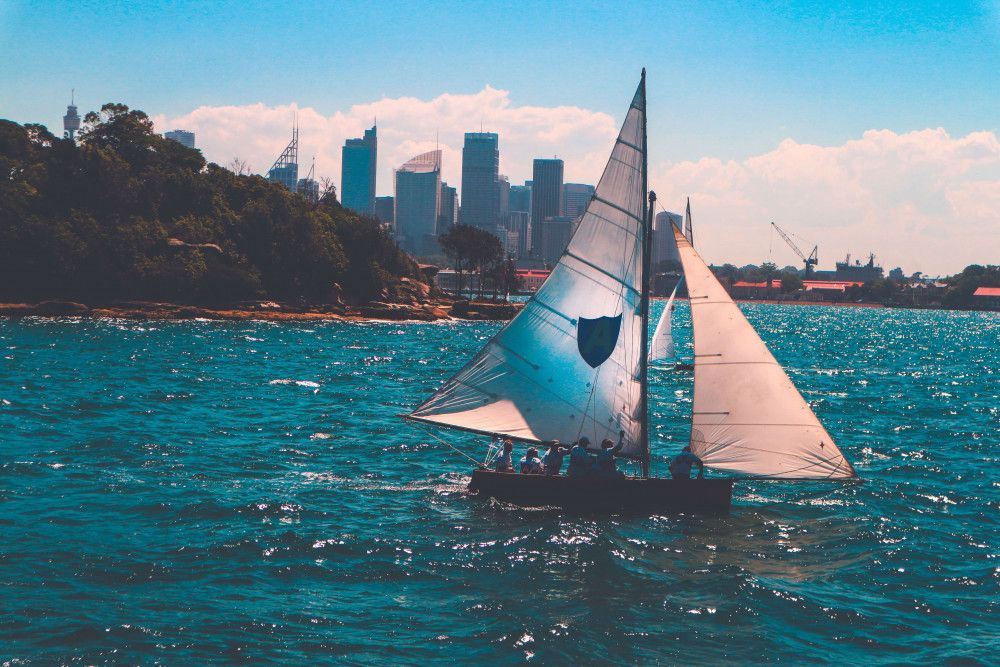
On this page:
More info on sail rig types, mast configurations and rig types, rigs with one mast, rigs with two masts, rigs with three masts, related questions.
This article is part 2 of my series on sails and rig types. Part 1 is all about the different types of sails. If you want to know everything there is to know about sails once and for all, I really recommend you read it. It gives a good overview of sail types and is easy to understand.
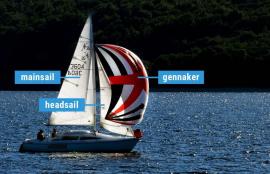
The Ultimate Guide to Sail Types and Rigs (with Pictures)
First of all, what is a sail rig? A sail rig is the way in which the sails are attached to the mast(s). In other words, it's the setup or configuration of the sailboat. The rig consists of the sail and mast hardware. The sail rig and sail type are both part of the sail plan. We usually use the sail rig type to refer to the type of boat.
Let's start by taking a look at the most commonly used modern sail rigs. Don't worry if you don't exactly understand what's going on. At the end of this article, you'll understand everything about rig types.
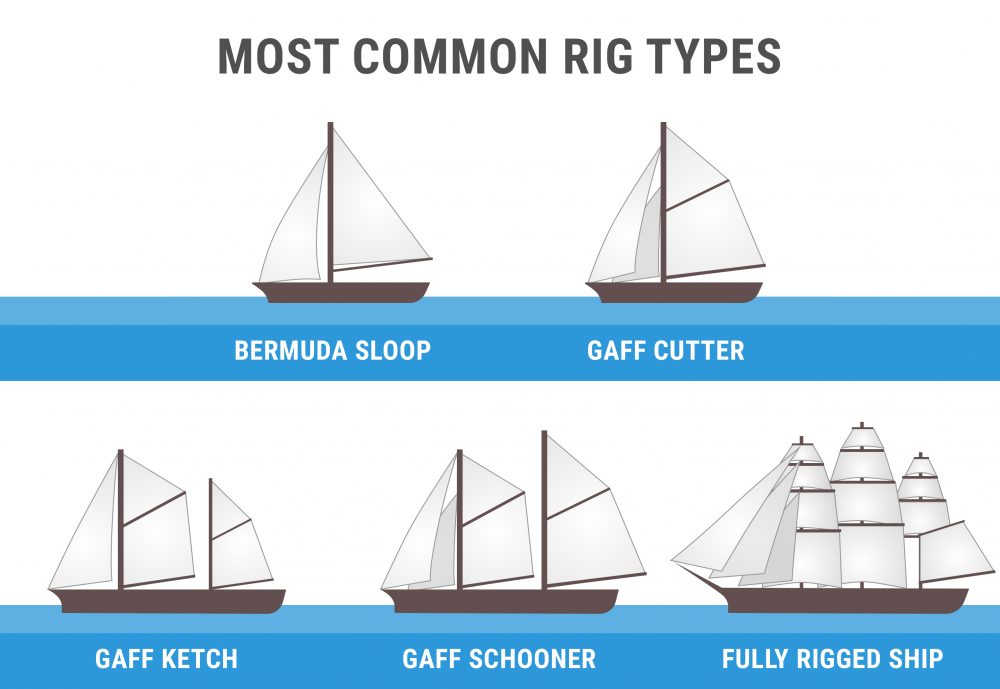
The sail rig and sail plan are often used interchangeably. When we talk of the sail rig we usually mean the sail plan . Although they are not quite the same. A sail plan is the set of drawings by the naval architect that shows the different combinations of sails and how they are set up for different weather conditions. For example a light air sail plan, storm sail plan, and the working sail plan (which is used most of the time).
So let's take a look at the three things that make up the sail plan.
The 3 things that make up the sail plan
I want to do a quick recap of my previous article. A sail plan is made up of:
- Mast configuration - refers to the number of masts and where they are placed
- Sail type - refers to the sail shape and functionality
- Rig type - refers to the way these sails are set up on your boat
I'll explore the most common rig types in detail later in this post. I've also added pictures to learn to recognize them more easily. ( Click here to skip to the section with pictures ).
How to recognize the sail plan?
So how do you know what kind of boat you're dealing with? If you want to determine what the rig type of a boat is, you need to look at these three things:
- Check the number of masts, and how they are set up.
- You look at the type of sails used (the shape of the sails, how many there are, and what functionality they have).
- And you have to determine the rig type, which means the way the sails are set up.
Below I'll explain each of these factors in more detail.
The most common rig types on sailboats
To give you an idea of the most-used sail rigs, I'll quickly summarize some sail plans below and mention the three things that make up their sail plan.
- Bermuda sloop - one mast, one mainsail, one headsail, fore-and-aft rigged
- Gaff cutter - one mast, one mainsail, two staysails, fore-and-aft rigged
- Gaff schooner - two-masted (foremast), two mainsails, staysails, fore-and-aft rigged
- Gaff ketch - two-masted (mizzen), two mainsails, staysails, fore-and-aft rigged
- Full-rigged ship or tall ship - three or more masts, mainsail on each mast, staysails, square-rigged
The first word is the shape and rigging of the mainsail. So this is the way the sail is attached to the mast. I'll go into this later on. The second word refers to the mast setup and amount of sails used.
Most sailboats are Bermuda sloops. Gaff-rigged sails are mostly found on older, classic boats. Square-rigged sails are generally not used anymore.
But first I want to discuss the three factors that make up the sail plan in more detail.
Ways to rig sails
There are basically two ways to rig sails:
- From side to side, called Square-rigged sails - the classic pirate sails
- From front to back, called Fore-and-aft rigged sails - the modern sail rig
Almost all boats are fore-and-aft rigged nowadays.
Square sails are good for running downwind, but they're pretty useless when you're on an upwind tack. These sails were used on Viking longships, for example. Their boats were quicker downwind than the boats with fore-and-aft rigged sails, but they didn't handle as well.
The Arabs first used fore-and-aft rigged sails, making them quicker in difficult wind conditions.
Quick recap from part 1: the reason most boats are fore-and-aft rigged today is the increased maneuverability of this configuration. A square-rigged ship is only good for downwind runs, but a fore-and-aft rigged ship can sail close to the wind, using the lift to move forward.
The way the sails are attached to the mast determines the shape of the sail. The square-rigged sails are always attached the same way to the mast. The fore-and-aft rig, however, has a lot of variations.
The three main sail rigs are:
- Bermuda rig - most used - has a three-sided (triangular) mainsail
- Gaff rig - has a four-sided mainsail, the head of the mainsail is guided by a gaff
- Lateen rig - has a three-sided (triangular) mainsail on a long yard
The Bermuda is the most used, the gaff is a bit old-fashioned, and the lateen rig is outdated (about a thousand years). Lateen rigs were used by the Moors. The Bermuda rig is actually based on the Lateen rig (the Dutch got inspired by the Moors).

Other rig types that are not very common anymore are:
- Junk rig - has horizontal battens to control the sail
- Settee rig - Lateen with the front corner cut off
- Crabclaw rig
Mast configuration
Okay, we know the shape of the mainsail. Now it's time to take a look at the mast configuration. The first thing is the number of masts:
- one-masted boats
- two-masted boats
- three-masted boats
- four masts or up
- full or ship-rigged boats - also called 'ships' or 'tall ships'
I've briefly mentioned the one and two mast configurations in part 1 of this article. In this part, I'll also go over the three-masted configurations, and the tall ships as well.
A boat with one mast has a straightforward configuration because there's just one mast. You can choose to carry more sails or less, but that's about it.
A boat with two masts or more gets interesting. When you add a mast, it means you have to decide where to put the extra mast: in front, or in back of the mainmast. You can also choose whether or not the extra mast will carry an extra mainsail. The placement and size of the extra mast are important in determining what kind of boat we're dealing with. So you start by locating the largest mast, which is always the mainmast.
From front to back: the first mast is called the foremast. The middle mast is called the mainmast. And the rear mast is called the mizzenmast.

What is the mizzenmast? The mizzenmast is the aft-most (rear) mast on a sailboat with three or more masts or the mast behind the mainmast on a boat with two masts. The mizzenmast carries the mizzen sail. On a two-masted boat, the mizzenmast is always (slightly) smaller than the mainmast. What is the purpose of the mizzen sail? The mizzen sail provides more sail area and flexibility in sail plan. It can be used as a big wind rudder, helping the sailor to have more control over the stern of the ship. It pushes the stern away from the wind and forces the bow in the opposite way. This may help to bring the bow into the wind when at anchor.
I always look at the number of masts first, because this is the easiest to spot. So to make this stuff more easy to understand, I've divided up the rig types based on the number of masts below.
Why would you want more masts and sail anyways?
Good question. The biggest advantage of two masts compared to one (let's say a ketch compared to a sloop), is that it allows you to use multiple smaller sails to get the same sail area. It also allows for shorter masts.
This means you reduce the stress on the rigging and the masts, which makes the ketch rig safer and less prone to wear and tear. It also doesn't capsize as quickly. So there are a couple of real advantages of a ketch rig over a sloop rig.
In the case of one mast, we look at the number of sails it carries.
Boats with one mast can have either one sail, two sails, or three or more sails.
Most single-masted boats are sloops, which means one mast with two sails (mainsail + headsail). The extra sail increases maneuverability. The mainsail gives you control over the stern, while the headsail gives you control over the bow.
Sailor tip: you steer a boat using its sails, not using its rudder.
The one-masted rigs are:
- Cat - one mast, one sail
- Sloop - one mast, two sails
- Cutter - one mast, three or more sails
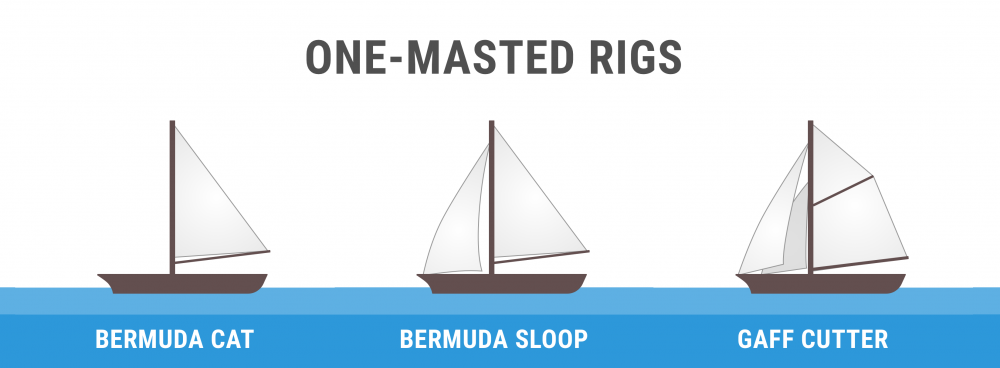
The cat is the simplest sail plan and has one mast with one sail. It's easy to handle alone, so it's very popular as a fishing boat. Most (very) small sailboats are catboats, like the Sunfish, and many Laser varieties. But it has a limited sail area and doesn't give you the control and options you have with more sails.
The most common sail plan is the sloop. It has one mast and two sails: the main and headsail. Most sloops have a Bermuda mainsail. It's one of the best racing rigs because it's able to sail very close to the wind (also called 'weatherly'). It's one of the fastest rig types for upwind sailing.
It's a simple sail plan that allows for high performance, and you can sail it short-handed. That's why most sailboats you see today are (Bermuda) sloops.
This rig is also called the Marconi rig, and it was developed by a Dutch Bermudian (or a Bermudian Dutchman) - someone from Holland who lived on Bermuda.
A cutter has three or more sails. Usually, the sail plan looks a lot like the sloop, but it has three headsails instead of one. Naval cutters can carry up to 6 sails.
Cutters have larger sail area, so they are better in light air. The partition of the sail area into more smaller sails give you more control in heavier winds as well. Cutters are considered better for bluewater sailing than sloops (although sloops will do fine also). But the additional sails just give you a bit more to play with.
Two-masted boats can have an extra mast in front or behind the mainmast. If the extra mast is behind (aft of) the mainmast, it's called a mizzenmast . If it's in front of the mainmast, it's called a foremast .
If you look at a boat with two masts and it has a foremast, it's most likely either a schooner or a brig. It's easy to recognize a foremast: the foremast is smaller than the aft mast.
If the aft mast is smaller than the front mast, it is a sail plan with a mizzenmast. That means the extra mast has been placed at the back of the boat. In this case, the front mast isn't the foremast, but the mainmast. Boats with two masts that have a mizzenmast are most likely a yawl or ketch.
The two-masted rigs are:
- Lugger - two masts (mizzen), with lugsail (a cross between gaff rig and lateen rig) on both masts
- Yawl - two masts (mizzen), fore-and-aft rigged on both masts. Main mast is much taller than mizzen. Mizzen without a mainsail.
- Ketch - two masts (mizzen), fore-and-aft rigged on both masts. Main mast with only slightly smaller mizzen. Mizzen has mainsail.
- Schooner - two masts (foremast), generally gaff rig on both masts. Main mast with only slightly smaller foremast. Sometimes build with three masts, up to seven in the age of sail.
- Bilander - two masts (foremast). Has a lateen-rigged mainsail and square-rigged sails on the foremast and topsails.
- Brig - two masts (foremast), partially square-rigged. The main mast carries small lateen-rigged sail.

The yawl has two masts that are fore-and-aft rigged and a mizzenmast. The mizzenmast is much shorter than the mainmast, and it doesn't carry a mainsail. The mizzenmast is located aft of the rudder and is mainly used to increase helm balance.
A ketch has two masts that are fore-and-aft rigged. The extra mast is a mizzenmast. It's nearly as tall as the mainmast and carries a mainsail. Usually, the mainsails of the ketch are gaff-rigged, but there are Bermuda-rigged ketches too. The mizzenmast is located in front of the rudder instead of aft, as on the yawl.
The function of the ketch's mizzen sail is different from that of the yawl. It's actually used to drive the boat forward, and the mizzen sail, together with the headsail, are sufficient to sail the ketch. The mizzen sail on a yawl can't really drive the boat forward.
Schooners have two masts that are fore-and-aft rigged. The extra mast is a foremast which is generally smaller than the mainmast, but it does carry a mainsail. Schooners are also built with a lot more masts, up to seven (not anymore). The schooner's mainsails are generally gaff-rigged.
The schooner is easy to sail but not very fast. It handles easier than a sloop, except for upwind, and it's only because of better technology that sloops are now more popular than the schooner.
The brig has two masts. The foremast is always square-rigged. The mainmast can be square-rigged or is partially square-rigged. Some brigs carry a lateen mainsail on the mainmast, with square-rigged topsails.
Some variations on the brig are:
Brigantine - two masts (foremast), partially square-rigged. Mainmast carries no square-rigged mainsail.
Hermaphrodite brig - also called half brig or schooner brig. Has two masts (foremast), partially square-rigged. Mainmast carries a gaff rig mainsail and topsail, making it half schooner.
Three-masted boats are mostly barques or schooners. Sometimes sail plans with two masts are used with more masts.
The three-masted rigs are:
- Barque - three masts, fore, and mainmast are square-rigged, the mizzenmast is usually gaff-rigged. All masts carry mainsail.
- Barquentine - three masts, foremast is square-rigged, the main and mizzenmast are fore-and-aft rigged. Also called the schooner barque.
- Polacca - three masts, foremast is square-rigged, the main and mizzenmast are lateen-rigged.
- Xebec - three masts, all masts are lateen-rigged.

A barque has three or four masts. The fore and mainmast are square-rigged, and the mizzen fore-and-aft, usually gaff-rigged. Carries a mainsail on each mast, but the mainsail shape differs per mast (square or gaff). Barques were built with up to five masts. Four-masted barques were quite common.
Barques were a good alternative to full-rigged ships because they require a lot fewer sailors. But they were also slower. Very popular rig for ocean crossings, so a great rig for merchants who travel long distances and don't want 30 - 50 sailors to run their ship.
Barquentine
The barquentine usually has three masts. The foremast is square-rigged and the main and mizzenmast fore-and-aft. The rear masts are usually gaff-rigged.
Faster than a barque or a schooner, but the performance is worse than both.
The polacca or polacre rig has three masts with a square-rigged foremast. The main and mizzenmast are lateen-rigged. Beautiful boat to see. Polacca literally means 'Polish' (it's Italian). It was a popular rig type in the Mediterranean in the 17th century. It looks like the xebec, which has three lateen-rigged masts.
Fun fact: polaccas were used by a Dutch sailor-turned-Turkish-pirate (called Murat Reis).
The xebec is a Mediterranean trading ship with three masts. All masts are lateen-rigged. I couldn't find any surviving xebecs, only models and paintings. So I guess this rig is outdated a long time.
A boat with three or more masts that all carry square-rigged sails is called a ship, a tall ship, or a full-rigged ship. So it's at this point that we start calling boats 'ships'. It has nothing to do with size but with the type of rigging.
More sails mean less stress on all of them. These ships use a lot of sails to distribute the forces, which reduces the stress on the rigging and the masts. Square sails mean double the sail area in comparison to triangular sails.
They are quite fast for their size, and they could outrun most sloops and schooners (schooners were relatively a lot heavier). The reason is that tall ships could be a lot longer than sloops, giving them a lot of extra hull speed. Sloops couldn't be as large because there weren't strong enough materials available. Try making a single triangular sail with a sail area of over 500 sq. ft. from linen.
So a lot of smaller sails made sense. You could have a large ship with a good maximum hull speed, without your sails ripping apart with every gust of wind.
But you need A LOT of sailors to sail a tall ship: about 30 sailors in total to ie. reef down sails and operate the ship. That's really a lot.
Tall ships are used nowadays for racing, with the popular tall ship races traveling the world. Every four years I go and check them out when they are at Harlingen (which is very close to where I live).
Check out the amazing ships in this video of the tall ship races last year near my hometown. (The event was organized by friends of mine).
What is the difference between a schooner and a sloop? A schooner has two masts, whereas the sloop only has one. The schooner carries more sails, with a mainsail on both masts. Also, sloops are usually Bermuda-rigged, whereas schooners are usually gaff-rigged. Most schooners also carry one or two additional headsails, in contrast to the single jib of the sloop.
What do you call a two-masted sailboat? A two-masted sailboat is most likely a yawl, ketch, schooner, or brig. To determine which one it is you have to locate the mainmast (the tallest). At the rear: schooner or brig. In front: yawl or ketch. Brigs have a square-rigged foremast, schooners don't. Ketches carry a mainsail on the rear mast; yawls don't.
What is a sloop rig? A sloop rig is a sailboat with one mast and two sails: a mainsail and headsail. It's a simple sail plan that handles well and offers good upwind performance. The sloop rig can be sailed shorthanded and is able to sail very close to the wind, making it very popular. Most recreational sailboats use a sloop rig.
What is the difference between a ketch and a yawl? The most important difference between a ketch and a yawl are the position and height of the mizzenmast. The mizzenmast on a yawl is located aft of the rudder, is shorter than the mainmast and doesn't carry a mainsail. On a ketch, it's nearly as long as the mainmast and carries a mainsail.

There are a wonderful lots of DIY changeability shows on the cable airwaves these days.
Rick the rigger
There are SO many errors on this site it really should be taken down.
First major mistake is to say you are no longer afraid of the sea.
One that truly gets up my nose is the term ‘fully’ rigged ship. It’s a FULL rigged ship!! Your mast names are the wrong way round and just because there may be 3 it doesn’t automatically mean the one in the middle is the main.
I could go on and totally destroy your over inflated but fragile ego but I won’t. All I will say is go learn a lot more before posting.
Shawn Buckles
Thanks for your feedback. If you like to point out anything more specific, please let me know and I will update the articles. I’ve changed fully-rigged to full-rigged ship - which is a typo on my part. I try to be as concise as I can, but, obviously, we all make mistakes every now and then. The great thing about the internet is that we can learn from each other and update our knowledge together.
If you want to write yourself and share your knowledge, please consider applying as a writer for my blog by clicking on the top banner.
Thanks, Shawn
Well, I feel that I’ve learned a bit from this. The information is clear and well laid out. Is it accurate? I can’t see anything at odds with the little I knew before, except that I understood a xebec has a square rigged centre mainmast, such as the Pelican ( https://www.adventureundersail.com/ )
Hi, Shawn, You forgot (failed) to mention another type of rig? The oldest type of rig known and still functions today JUNK RIG!
Why are so many of the comments here negative. I think it is wonderful to share knowledge and learn together. I knew a little about the subject (I’m an Aubrey-Maturin fan!) but still found this clarified some things for me. I can’t comment therefore on the accuracy of the article, but it seems clear to me that the spirit of the author is positive. We owe you some more bonhomme I suggest Shawn.
As they say in the Navy: “BZ” - for a good article.
Been reading S.M. Stirling and wanted to understand the ship types he references. Thank you, very helpful.
This site is an awesome starting point for anyone who would like to get an overview of the subject. I am gratefull to Shawn for sharing - Thanks & Kudos to you! If the negative reviewers want to get a deeper technical knowledge that is accurate to the n-th then go study the appropriate material. Contribute rather than destroy another’s good work. Well done Shawn. Great job!
Good stuff Shawn - very helpful. As a novice, it’s too confusing to figure out in bits and pieces. Thanks for laying it out.
First of all I have to say that Rick ‘the rigger’ is obviously the one with the “over inflated but fragile ego” and I laughed when you suggested he share his knowledge on your blog, well played!
As for the content it’s great, hope to read more soon!
Alec Lowenthal
Shawn, I have a painting of a Spanish vessel, two masted, with. Lateen sails on both masts and a jib. The mainsail is ahead of the main mast (fore) and the other is aft of the mizzen mast. Would this be what you call lugger rig? I have not seen a similar picture. Thanks, Alec.
Thank you for your article I found easy to read and understand, and more importantly remember, which emphasises the well written.. Pity about the negative comments, but love your proactive responses!
This vessel, “SEBASTIAN” out of Garrucha, Almería, España, was painted by Gustave Gillman in 1899.
Sorry, picture not accepted!
Thank you for a very informative article. I sail a bit and am always looking for more knowledge. I like the way you put forth your info and I feel if you can’t say anything positive, then that person should have their own blog or keep their opinions to their-self. I will be looking for more from you. I salute your way of dealing with negative comments.
Thank you for a great intro to sailing boats! I searched different sailboats because I use old sails tp make bags and wanted to learn the difference. Way more than I ever expected. Thanks for all the work put in to teach the rest of us.
Your description of a cutter is lacking, and your illustrations of “cutters” are actually cutter-rigged sloops. On a true cutter, the mast is moved further aft (with more than 40% of the ship forward of the mast). A sloop uses tension in the backstay to tension the luff of the foresail. The cutter can’t do this.
Also, a bermuda-rigged ketch will have a line running from the top of the mainmast to the top of the mizzenmast.
wow great guide to rig types! thanks
Interesting guide, however I am confused about the description of the brig. You say the main mast on a brig can have a lateen sail, but in your picture it looks like a gaff sail to me. How is it a lateen sail?
Hi Shawn, thank you for taking the time to share this information. It is clear and very helpful. I am new to sailing and thinking of buying my own blue water yacht. The information you have supplied is very useful. I still am seeking more information on performance and safety. Please keep up the good work. Best Regards
mickey fanelli
I’m starting to repair a model sailboat used in the lake I have three masts that have long been broken off and the sails need replacement. So my question is there a special relationship between the three masts I do have reminents of where the masts should go. they all broke off the boat along with the sails I can figure out where they go because of the old glue marks but it makes no sense. or does it really matter on a model thank you mickey
Cool, total novice here. I have learnt a lot. Thanks for sharing - the diagrams along with the text make it really easy to understand, especially for a beginner who hasn’t even stepped on a sailing boat.
Daryl Beatt
Thank you. Cleared up quite a few things for me. For example, I was familiar with the names “Xebecs” and “Polaccas” from recent reading about the Barbary War. I had gathered that the two Barbary types were better suited to sailing in the Med, but perhaps they were less able to be adaptable to military uses,(but one might assume that would be ok if one plans to board and fight, as opposed to fight a running gun duel). Specifically, the strangely one sided August 1, 1801 battle between the USS Enterprise under Lt. John Sterett and the Polacca cruiser Tripoli under Admiral Rais Mahomet Rous. On paper both ships seemed nearly equal in size, guns and crew, but pictures of the battle are confusing. While the Enterprise is usually rendered as the familiar schooner, the polacca Tripoli has been pictured in radically different ways. Thus the Wikipedia picture by Hoff in 1878 used to illustrate the Battle shows a Brig design for Tripoli, indicating 77 years later, polaccas were no longer common.
Lee Christiansen
I am curious as to what you would call a modern race boat with a fractional jib,not equipped for full masthead hoist? Thanks Lee
Thanks Guy: The information and pictures really eliminate a lot of the mystery of the terminology and the meanings. Also appreciate the insight of the handling idiosyncrasies “hand” (staff) requirements to manage a vessel for one that has not been on the water much. I long to spend significant time afloat, but have concern about the ability to handle a vessel due to advancing age. The Significant Other prefers to sit (in AC comfort)and be entertained by parties of cruise line employees. Thanks again for the information.
Gordon Smith
Your discussion made no mention of the galleon, a vessel with either square-rigged Fore and Main masts and a shorter lateen-rigged Mizzen, or, on larger galleons, square-rigged Fore and Main masts, with a lateen-rigged Mizzen and a lateen-rigged Bonaventure mast, both shorter than either the Fore or Main masts. Also, it was not uncommon for a galleon to hoist a square-rigged bowsprit topsail in addition to the usual square-rigged spritsail.
Emma Delaney
As a hobbyist, I was hesitant to invest in expensive CAD software, but CADHOBBY IntelliCAD has proven to be a cost-effective alternative that delivers the same quality and performance.
https://www.cadhobby.com/
Leave a comment
You may also like.
What's that sail for? Generally, I don't know. So I've come up with a system. I'll explain you everything there is to know about sails and rigs in this article.

17 Sailboat Types Explained: How To Recognize Them

Different Types of Sailing and Racing Explained
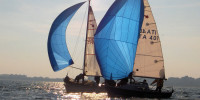
How Are Sail Numbers Assigned? (And how to pick yours)
Own your first boat within a year on any budget.
A sailboat doesn't have to be expensive if you know what you're doing. If you want to learn how to make your sailing dream reality within a year, leave your email and I'll send you free updates . I don't like spam - I will only send helpful content.
Ready to Own Your First Boat?
Just tell us the best email address to send your tips to:

- Find A School
- Certifications
- North U Sail Trim
- Inside Sailing with Peter Isler
- Docking Made Easy
- Study Quizzes
- Bite-sized Lessons
- Fun Quizzes
- Sailing Challenge

What Type of Sailboat is This?
By: Zeke Quezada, ASA Equipment , Sailboats
While sailing in the Sir Francis Drake Channel in the British Virgin Islands I noticed a peculiar catamaran heading in our direction. A two-masted catamaran. Have you seen a boat like this? Does it have a name?
How often do you see a sailboat and realize that it has a different sail plan or configuration and most likely has a different name?
This guide to sailboats should help you identify the types of sailboats you might encounter while on your cruising adventures.
You’ll be able to find even more info on these different type of sailboats in our series “What’s in a Rig.”
What type of a boat is this…?

A sloop rig is a boat with a single mast and a fore and aft sail configuration. Sloops date back to the early 17th century but didn’t really become popular until the 20th century. The likely reason for their popularity is their ability to efficiently head upwind and how relatively simple they are to control – great for short-handing.
Cutter Rig:

A variation on the Sloop is the Cutter Rig. Although it has gone through some changes through the course of history, the modern cutter rig is generally a set-up with two headsails. The forward sail is called the Yankee, and the one slightly behind it is the staysail.

There are many who feel that this very old but very innovative sail plan is superior to the more popular and ubiquitous sloop rig and others. The junk is predicated upon fully battened sails, a characteristic associated with more modern racing vessels, and they typically lack any standing rigging (stays and shrouds). Due to the full batten set-up, the sails maintain an efficient, consistent shape and are fast, especially downwind. In a big breeze, junk owners will attest that they’re extremely easy to reef and, as an added bonus, are inherently self-tacking.

They are two masted rigs with a main mast and a (smaller) mizzenmast that is set in front of the rudder post – they carry a jib just like a sloop. Generally, ketches will be in the 40-plus foot range. The reasoning for this is that before sailing hardware was as advanced as it is now, designers were looking for ways to carry a good amount of sail but make it manageable at the same time. This configuration served that purpose and, while doing so, also gave sailors quite a few options for various weather conditions and situations.

Like, the ketch, a yawl is equipped with two masts, a main and a mizzen, but ordinarily, on a yawl, the mast is smaller and set behind the rudder post. While some yawl sailors contest the small sail configuration that hangs over the stern as an aid to heaving to and steadying life at a mooring, most concede the mizzen on a yawl is not what it is on a ketch. Typically, it doesn’t provide any horsepower to speak of or ease-of-handling benefits in splitting the rig like a ketch or schooner might.

A gaff rig employs a spar on the top of the sail, and typically other sails can be set in conjunction with that mainsail with the gaff. Often, on the smaller, non-tall ship, gaff rigs, there will be a small triangular sail that fits between the main and the mast like a puzzle piece – this is the topsail.
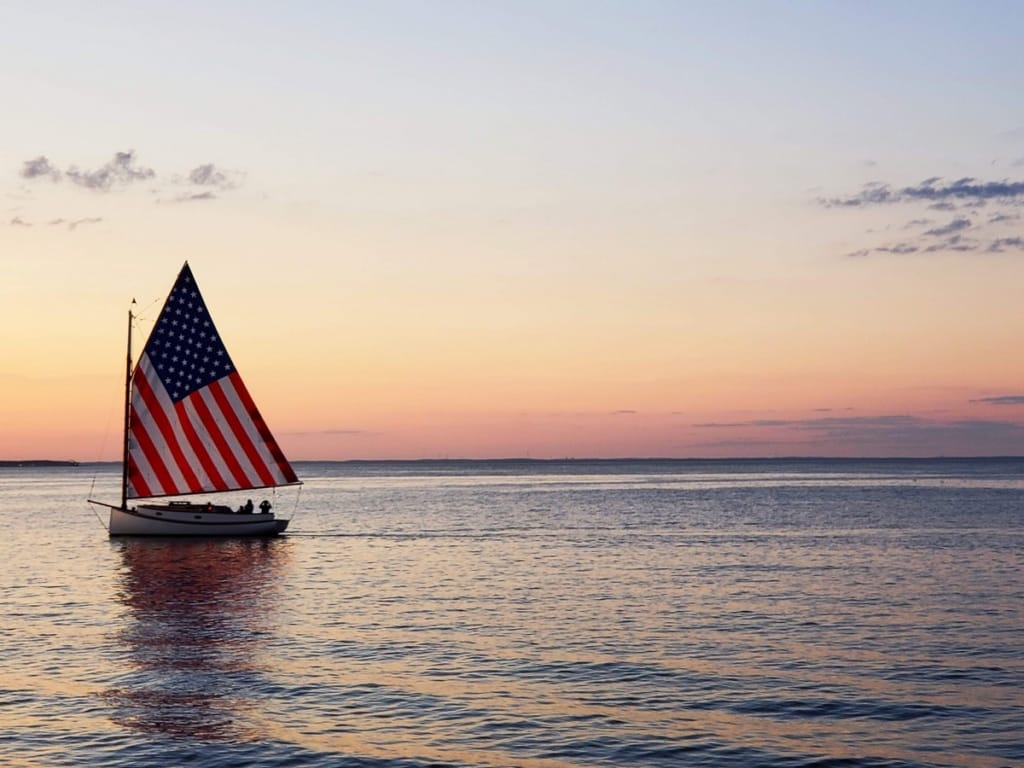
A cat rig is a single mast situated well forward, near the bow, which carries a large single sail and has no standing rigging, sometimes referred to as “unstayed.” An Optimist, Laser or Sabot are common (smaller) examples of a cat rig, but many bigger boats utilize the set-up.

A schooner is a sailboat with at least two masts, with the forward mast (foremast) being a bit shorter than the main mast. Although a schooner can have more than two masts, most were just two. During the time of their popularity, this smaller and better upwind setup allowed for a more efficient and manageable sailboat. It was the preferred choice of pirates, privateers, slaveship captains and others.
So what type of boat is this? Let us know. Find us on Social media and share your thoughts @AmericanSailing

Related Posts:

- Learn To Sail
- Mobile Apps
- Online Courses
- Upcoming Courses
- Sailor Resources
- ASA Log Book
- Bite Sized Lessons
- Knots Made Easy
- Catamaran Challenge
- Sailing Vacations
- Sailing Cruises
- Charter Resources
- International Proficiency Certificate
- Find A Charter
- All Articles
- Sailing Tips
- Sailing Terms
- Destinations
- Environmental
- Initiatives
- Instructor Resources
- Become An Instructor
- Become An ASA School
- Member / Instructor Login
- Affiliate Login

VIDEO
COMMENTS
Spoon Bow. Bulbous Bow. Parabolic and Cylindrical Bows. Axe Bows. Inverted Bow. Ram Bow. Conclusion. We will discuss a very important part of a ship or a boat - Bow. Ships and boats face immense resistance on the water for the simple fact that compared to air, water produces more drag when moved through.
Bow (watercraft) The bow ( / baʊ /) is the forward part of the hull of a ship or boat, [1] the point that is usually most forward when the vessel is underway. The aft end of the boat is the stern. [2] Prow may be used as a synonym for bow or it may mean the forward-most part of the bow above the waterline.
Well done with your master piece blogging. Just a small feedback. "The jib gives control over the bow of the ship, making it easier to maneuver the ship. The mainsail gives control over the stern of the ship." Can you please first tell the different part of a sail boat earlier and then talk about bow and stern later in the paragraph.
June 15, 2022. Sailboats come in numerous hull shapes. These include single-hull monohulls, along with double and triple-hull multihulls. There are two main categories of sailboat hulls: monohulls and multihulls. Common monohull types include flat-bottom vessels, fin-keel racers, bulb and bilge keel cruisers, heavy semi-displacement sailboats ...
Long overhangs at bow and stern meant that as the yacht heels to the wind, actual waterline length and thus maximum achievable boat speed increases. When the rules changed in 1990's, so did bow shapes to the generally plumb stems seen in the intervening decades, when it became better to make waterline length as close to overall length as ...
The hull is what most people would consider 'the boat'. It's the part that provides buoyancy and carries everything else: sails, masts, rigging, and so on. Without the hull, there would be no boat. The hull can be divided into different parts: deck, keel, cabin, waterline, bilge, bow, stern, rudder, and many more.
Sailboat Types There are many different types of boats for sailing, differentiated by three distinctive characteristics: Hull Type ... a supporting cable that runs from the top of the mast to the bow of the sailboat. Fractional Rig Sloop The forestay on a fractional rig sloop doesn't reach the top of the mast; it connects at a lower point ...
Diagram showing the half-angle of entry. The angle of entry at the bow is defined by the yacht's speed and function. In a sailing yacht, the half-angle might be between 10 and 20 degrees, with 10 degrees being a fine entry and 20 degrees being more suited for a slower displacement yacht. On a motor yacht a fine angle of entry, say 12 degrees ...
With enough power, this type of boat can surf its bow wave, break the suction it creates and beat its displacement hull speed. Planing Hulls. With even more power, a boat can leave its bow wave in the dust and zoom past it. This requires the boat's bottom to channel water away and sit on the surface. Once it is out of the water, any speed is ...
Before that happens, it's essentially a displacement hull. 2. Plowing. While a boat with a planing hull is picking up speed and lifting itself out of the water, it's in a plowing mode. You'll know when a boat is in plowing mode when the bow of the boat is elevated and the boat is throwing a relatively large wake.
There are five common boat hull types: Round-bottomed hulls - handle well in rough water: sailboats. Flat-bottomed hulls - very stable for calm inland waters: fishing boats. Multihulls - very stable and buoyant: catamarans. V-Shaped Hulls - fast and comfortable in chop: powerboats.
Other common sailboat types include the schooner, cutter, cat, ketch, schooner, catamaran, and trimaran. Other sailboat variations include pocket cruisers, motorsailers, displacement, and shoal-draft vessels. ... The cutter uses two headsails and often incorporates a large spar that extends from the bow (called a bowsprit). The additional ...
A Stern Look at Boat Sterns. Nothing stereotypes a cruising sailboat more than whats going on at the bow and stern. Both ends of the boat tell a lot about cruising preferences and what assets and obstacles will arise in a seaway. In the January 2013 issue of Practical Sailor, we took a close look at the bow and noted the trend toward plumb ...
8 Types of Sails for Sailboats. ... Regardless of your sailboat type, the headsail is positioned at the front of the mast - over the sailboat's bow. Because headsails are small, they are helpful when navigating through windy conditions. Smaller sails catch less wind, preventing them from propelling your boat as strongly as larger sails. ...
The catamaran bow is another popular bow type used in sailboats. It is characterized by its two parallel hulls, which provide more stability and greater speed. The catamaran bow is often seen in larger sailboats, such as cruising and racing boats. Finally, there is the fin keel. This bow type is designed to provide greater tracking stability ...
The most common types of sailboat rigs today, with photos showing the differences. Over history, dozens of sailboat rigs have been developed and used. ... almost at the bow, making room for a very long-footed mainsail. The mainsail of a cat rig may have a traditional boom or, as in this boat, a loose-footed mainsail attached at the aft corner ...
Types of sailboats by mast configuration. The configuration of the mast (s) is also important. There are three main types of masts: the mainmast, foremast and mizzenmast. The mainmast is usually the tallest mast on a sailboat and carries most of its weight; it's typically used as an additional support in heavy winds.
one mast. triangular mainsail (called a Bermuda sail) a foresail (also called the jib) fore-and-aft rigged. medium-sized (12 - 50 ft) Fore-and-aft rigged just means "from front to back". This type of rigging helps to sail upwind. Any sailboat with one mast and two sails could still be a sloop.
Headsail/Jib. The headsail, or the jib, is likely the second most popular kind of sail found on sailboats. This is because it often accompanies the mainsail, the most popular kind. On all sailboats, the headsail is put at the front of the mast over the sailboat's bow. It is always a smaller sail than the mainsail.
The Most Popular Types Of Sails On A Sailboat. A sloop-rigged sailboat typically features a mainsail, a headsail, and an additional light-wind sail, such as a spinnaker or Gennaker. The mainsail is rigged aft of the mast, while the headsail is attached to the forestay. The two most commonly used headsails are the Genoa and Jib.
Antique/Classic Sailboats. Less a type of sailboat and more a specific mentality are antique or classic sailboats. These are usually (although not always) wooden boats with old-school rigging and hardware. ... (similar to a full keel but cut away at the bow allowing the boat greater maneuverability in tight quarters as when docking) or bolted ...
The most common rig types on sailboats. To give you an idea of the most-used sail rigs, I'll quickly summarize some sail plans below and mention the three things that make up their sail plan. ... It pushes the stern away from the wind and forces the bow in the opposite way. This may help to bring the bow into the wind when at anchor. I always ...
Sloop: A sloop rig is a boat with a single mast and a fore and aft sail configuration. Sloops date back to the early 17th century but didn't really become popular until the 20th century. The likely reason for their popularity is their ability to efficiently head upwind and how relatively simple they are to control - great for short-handing.